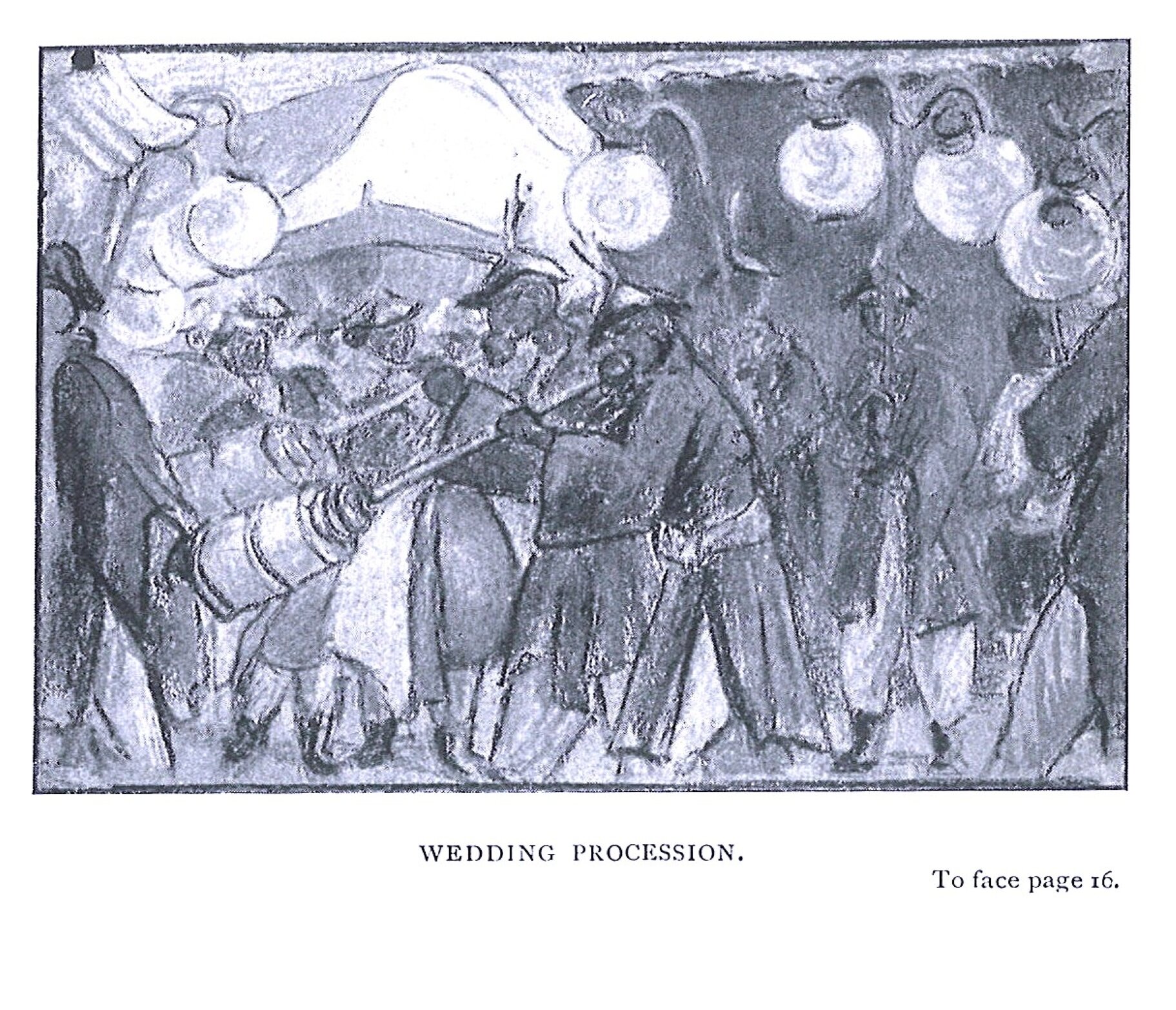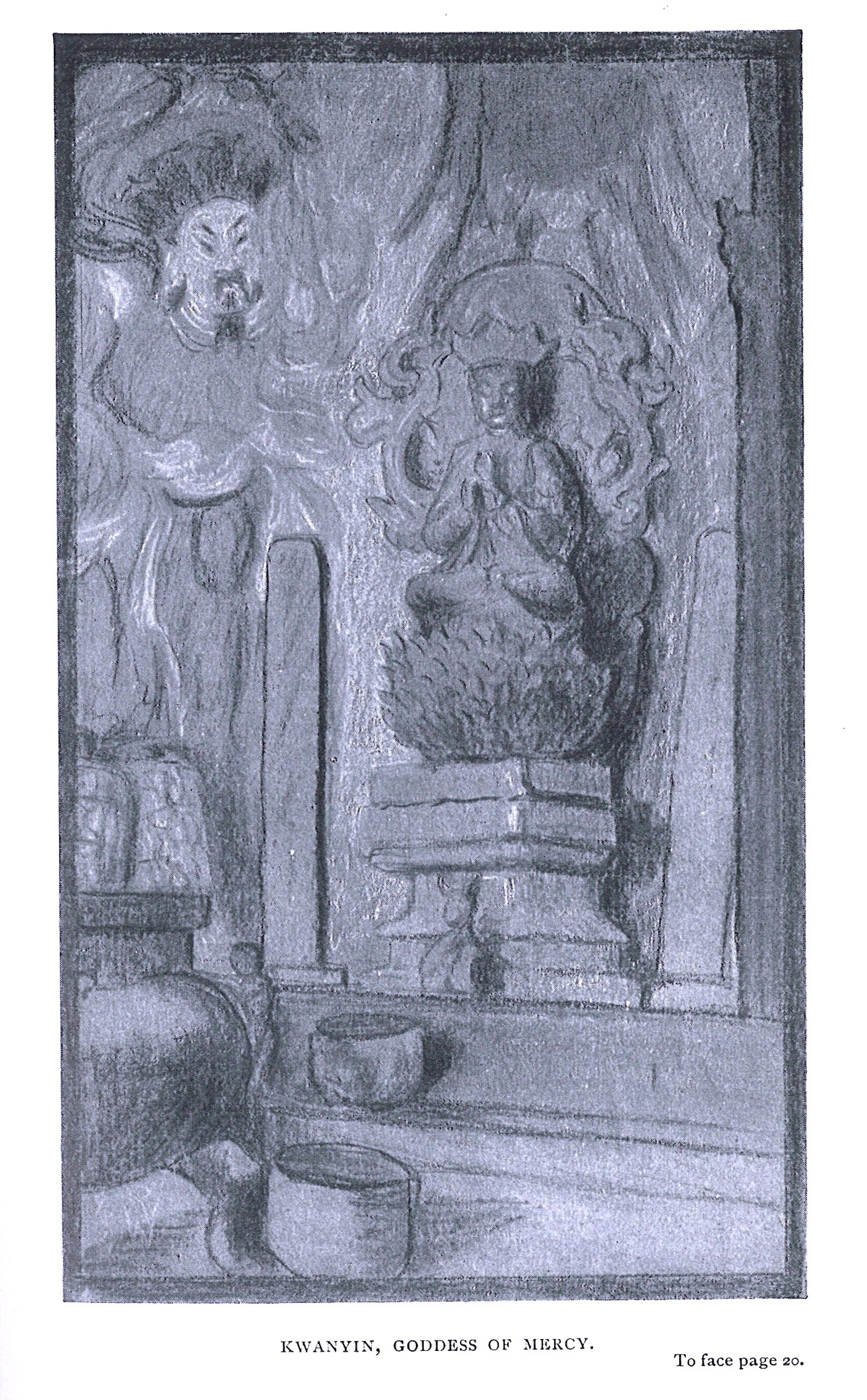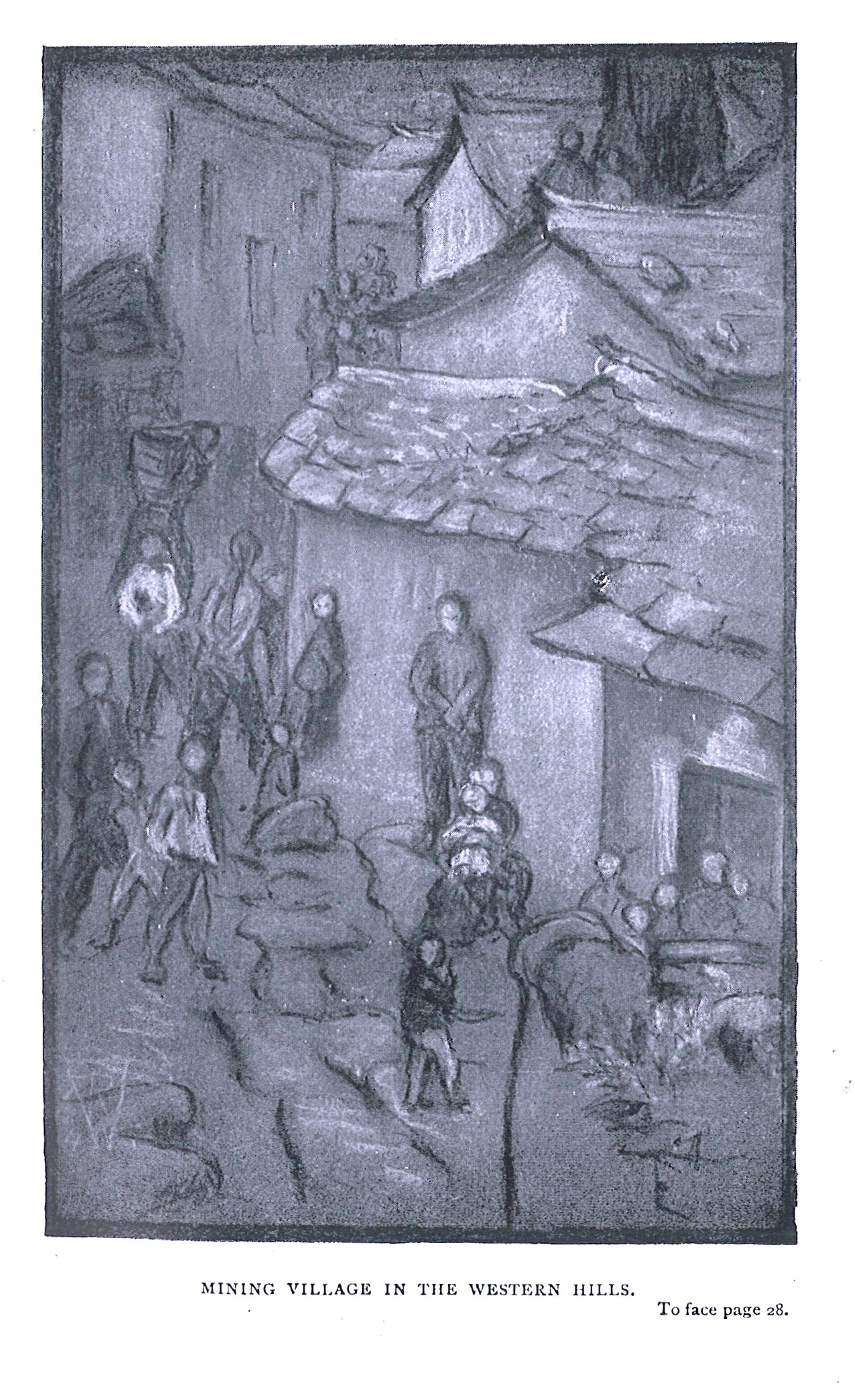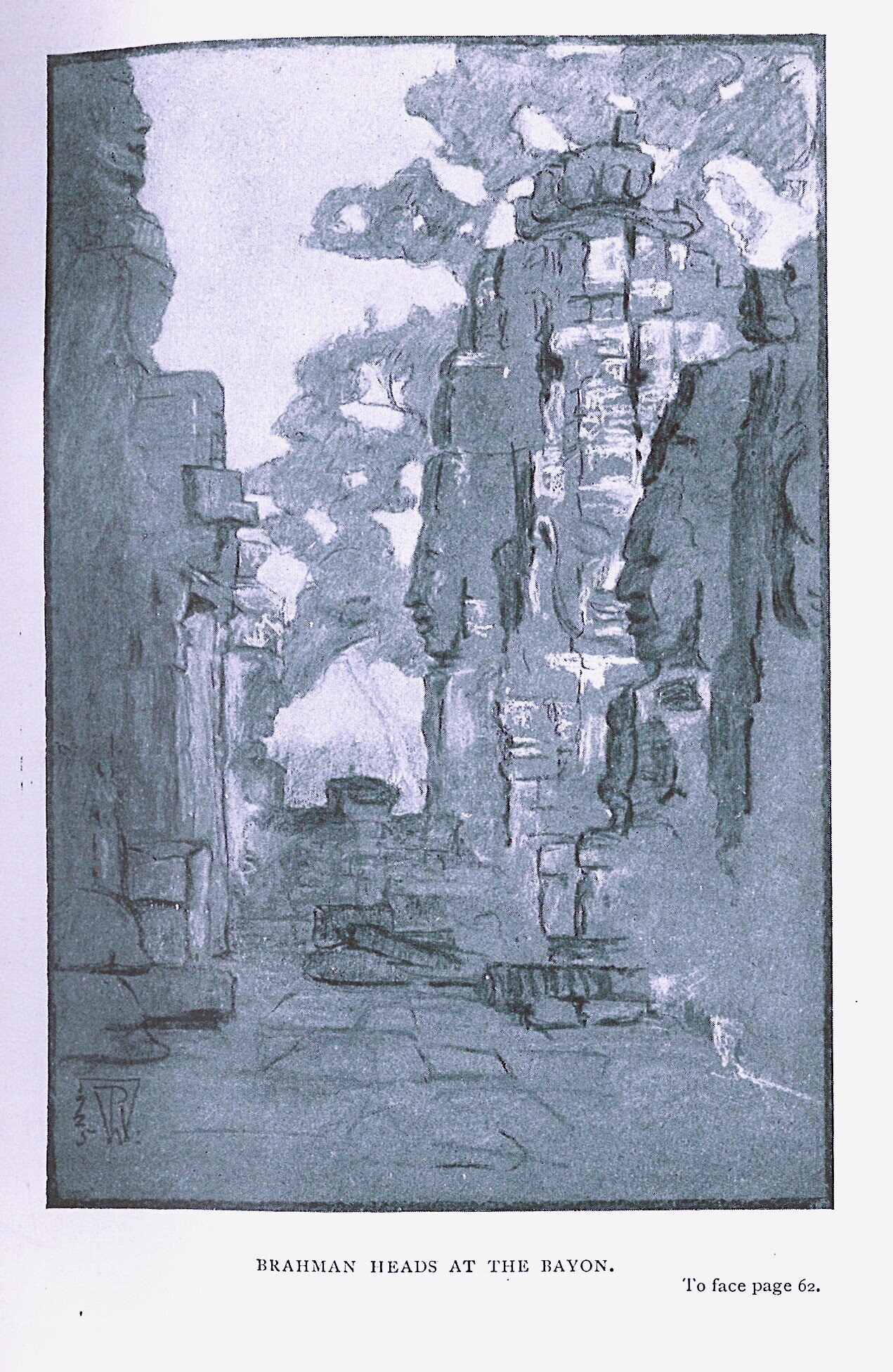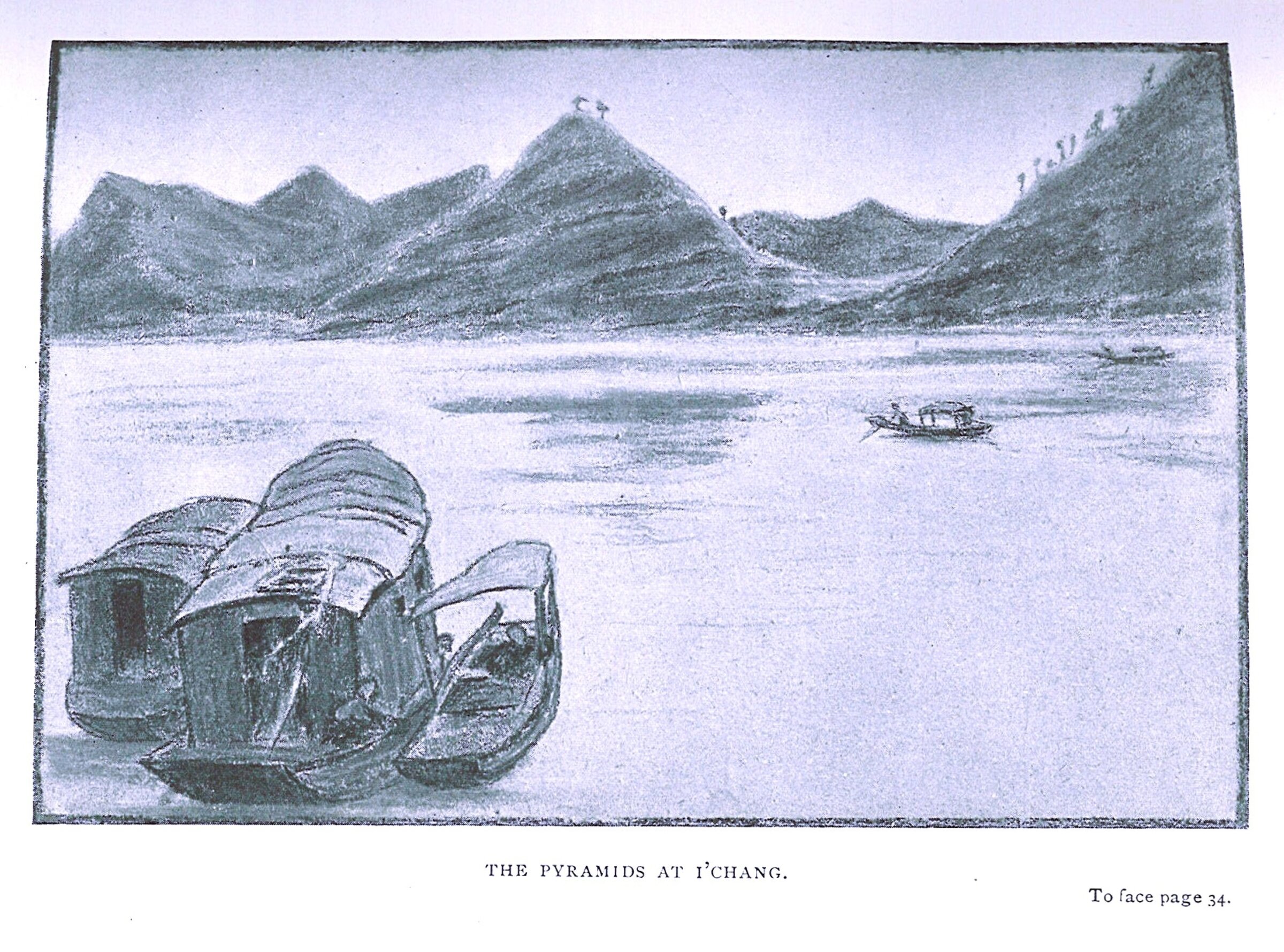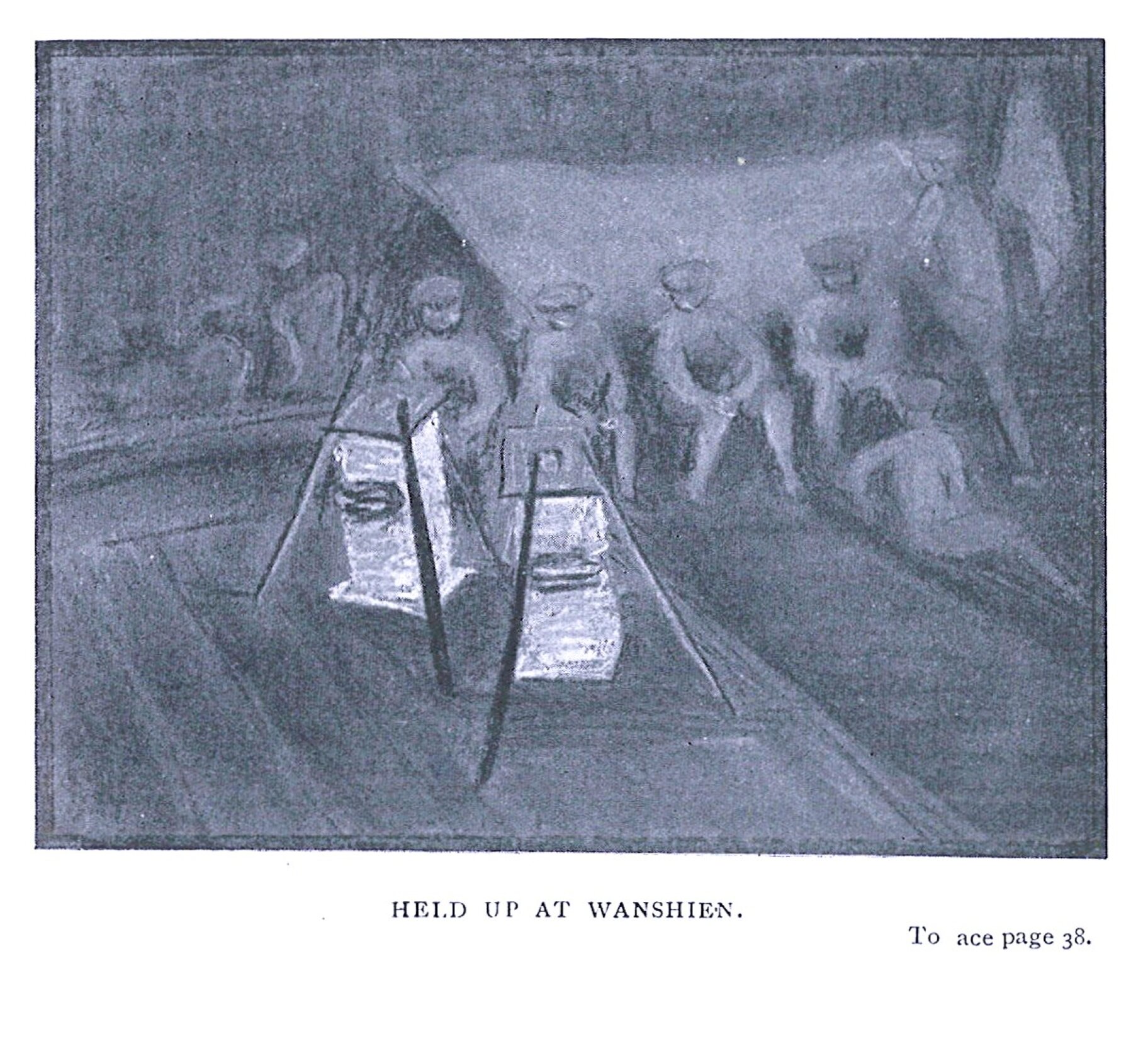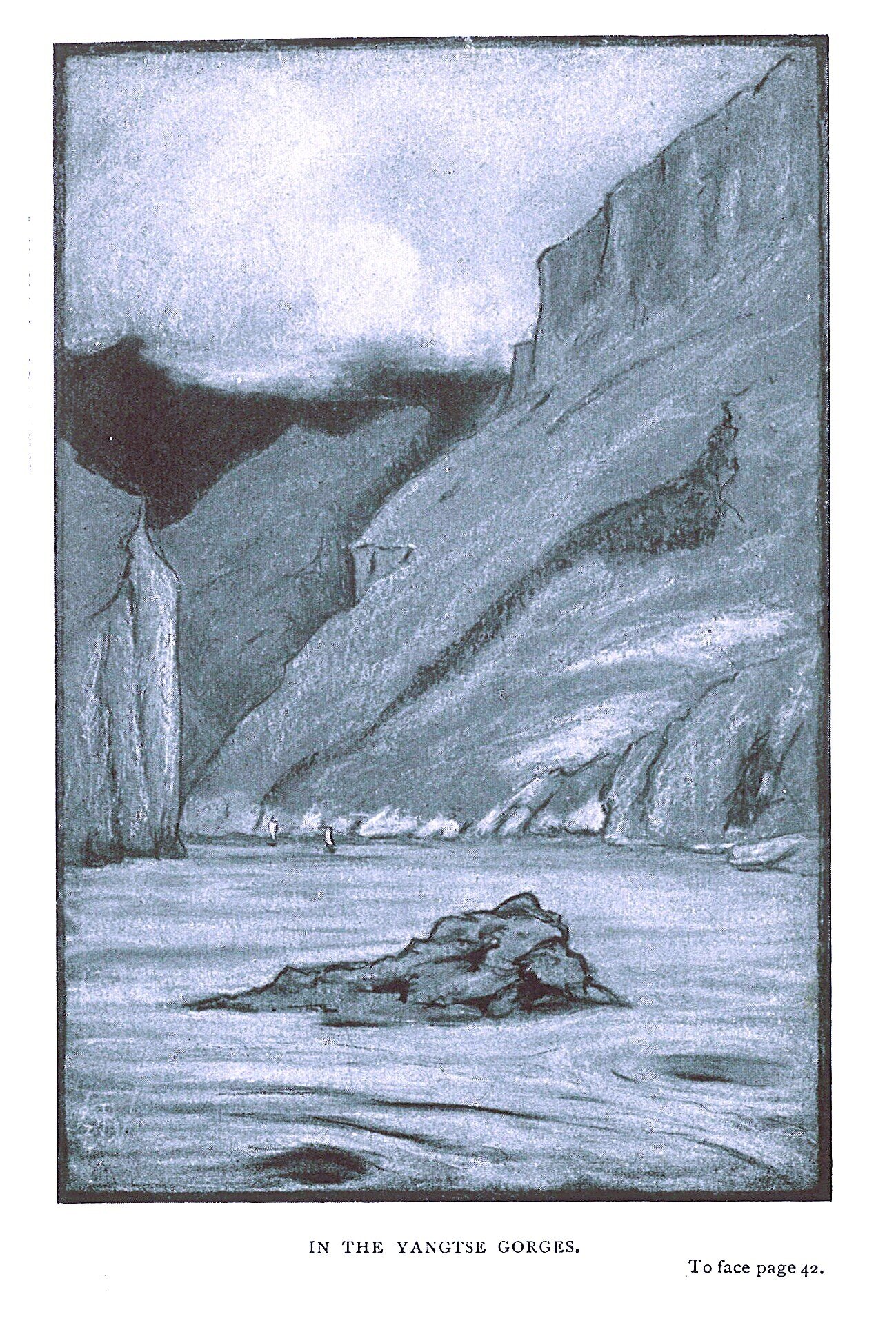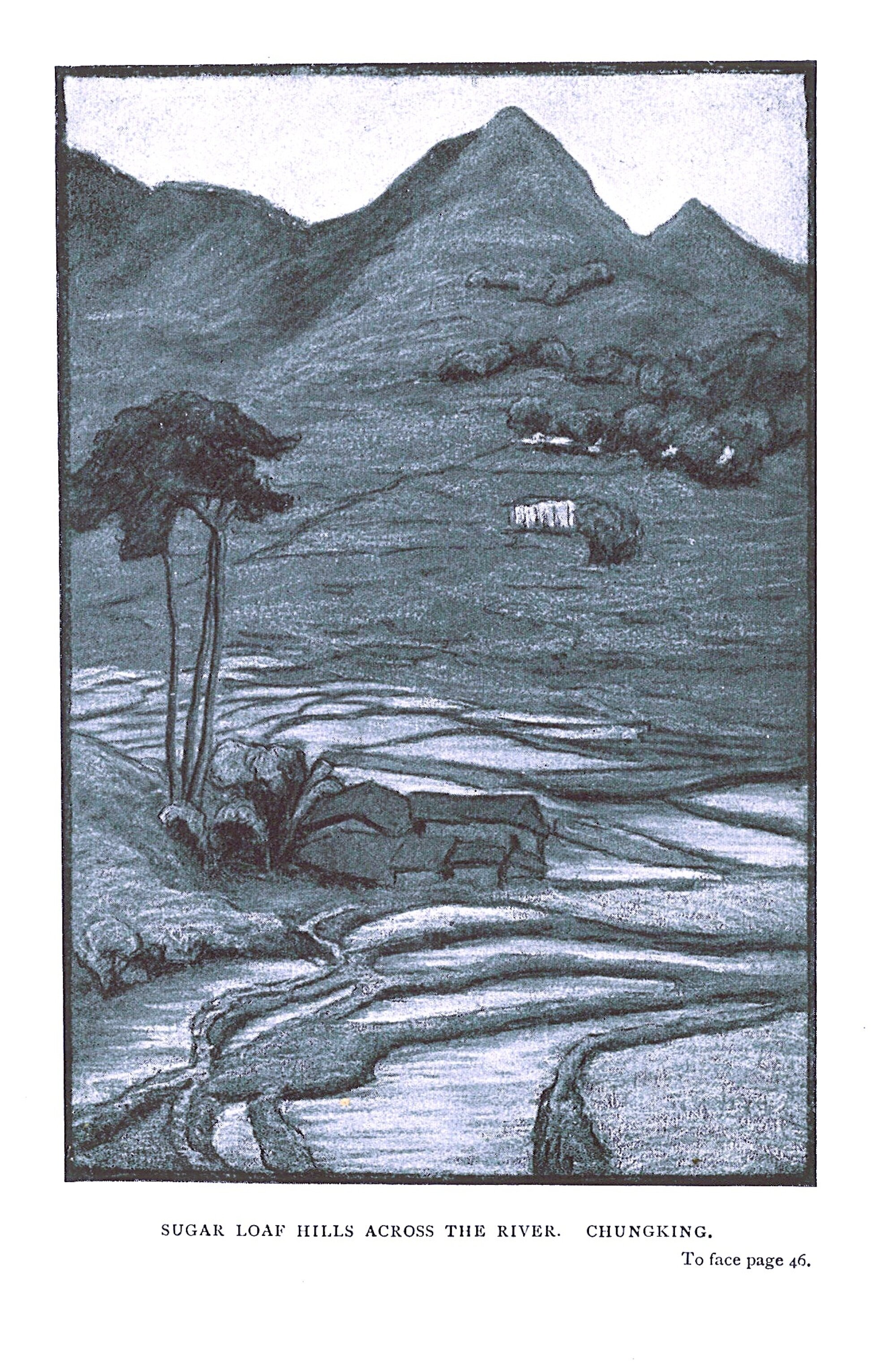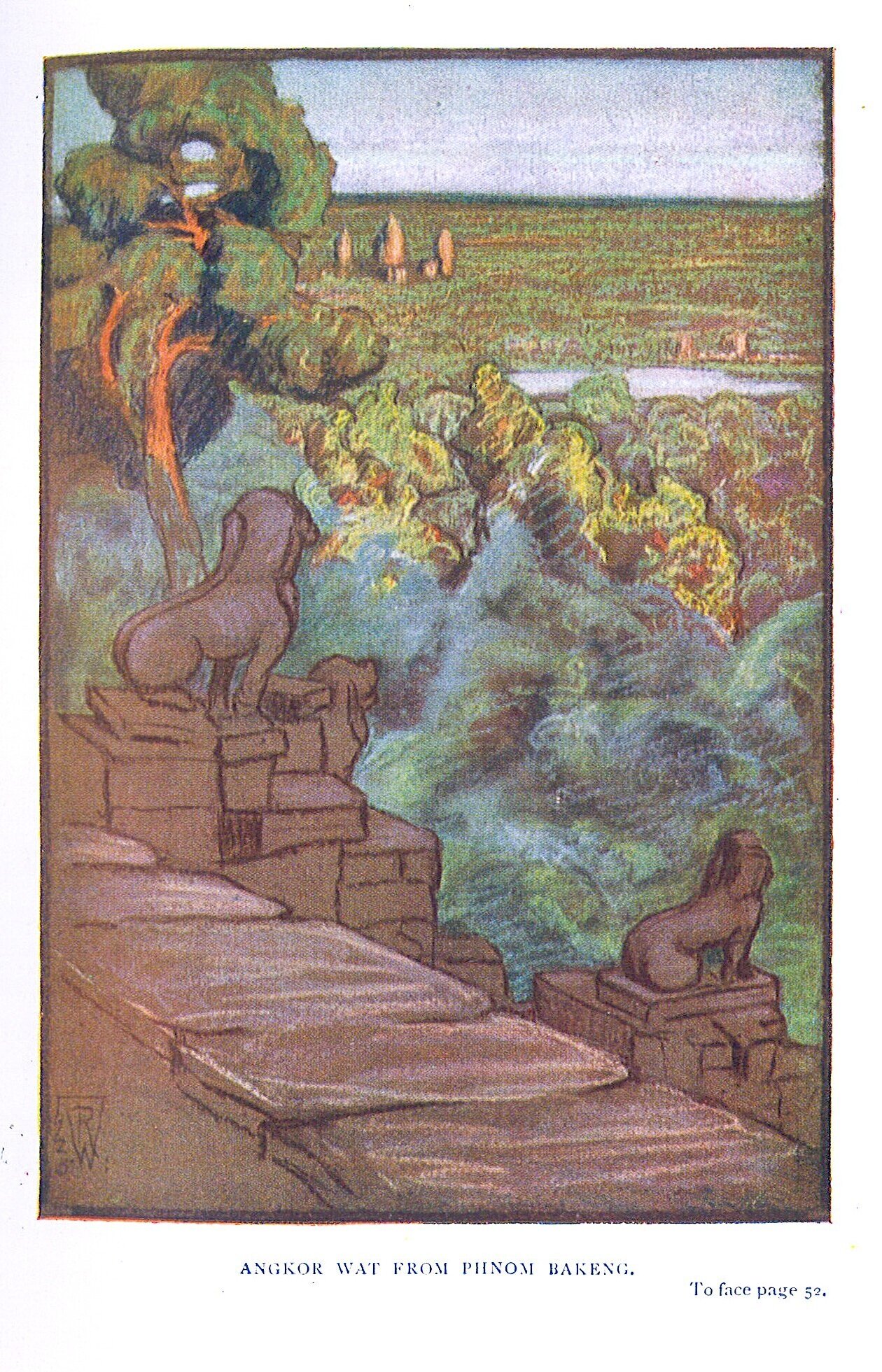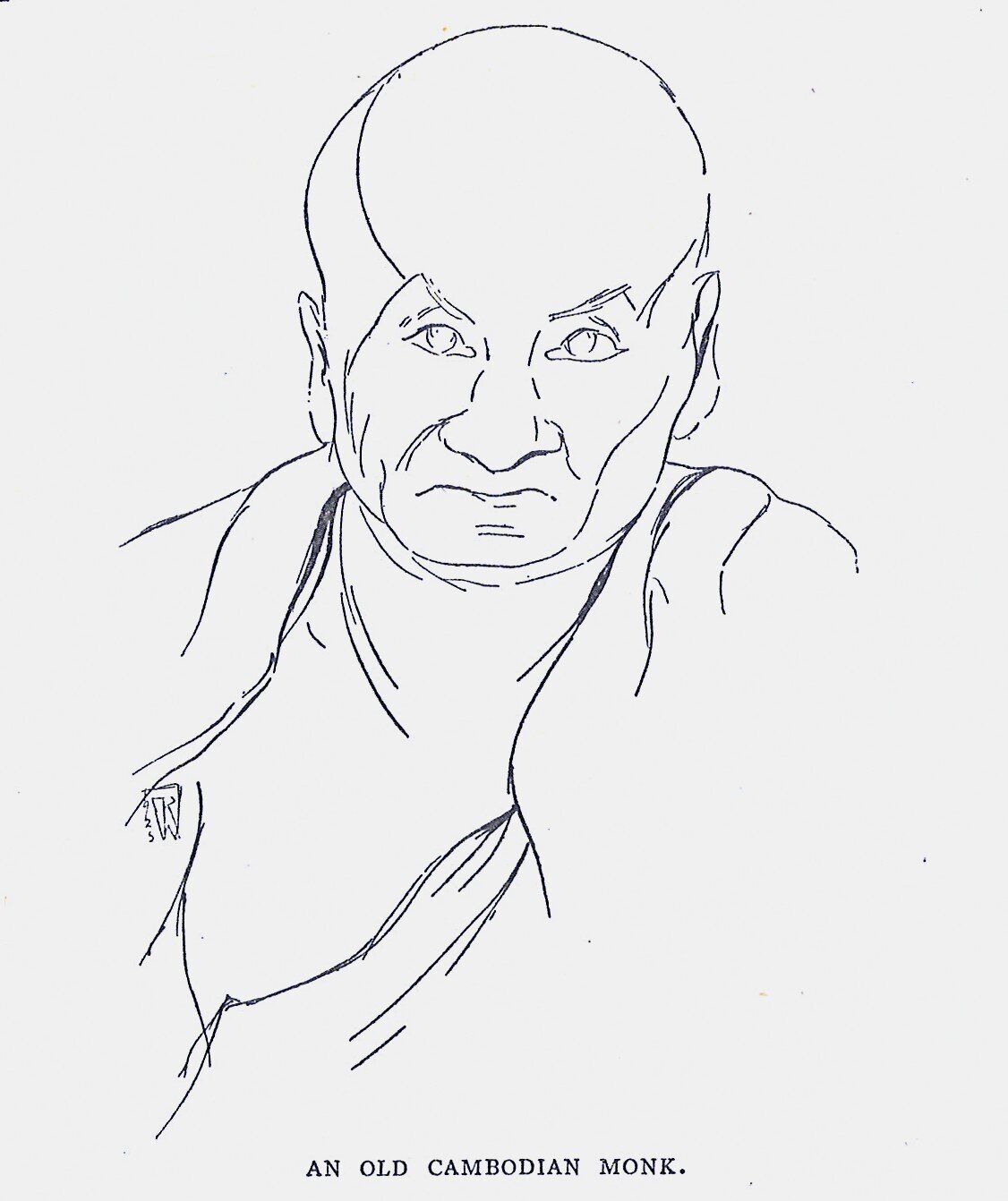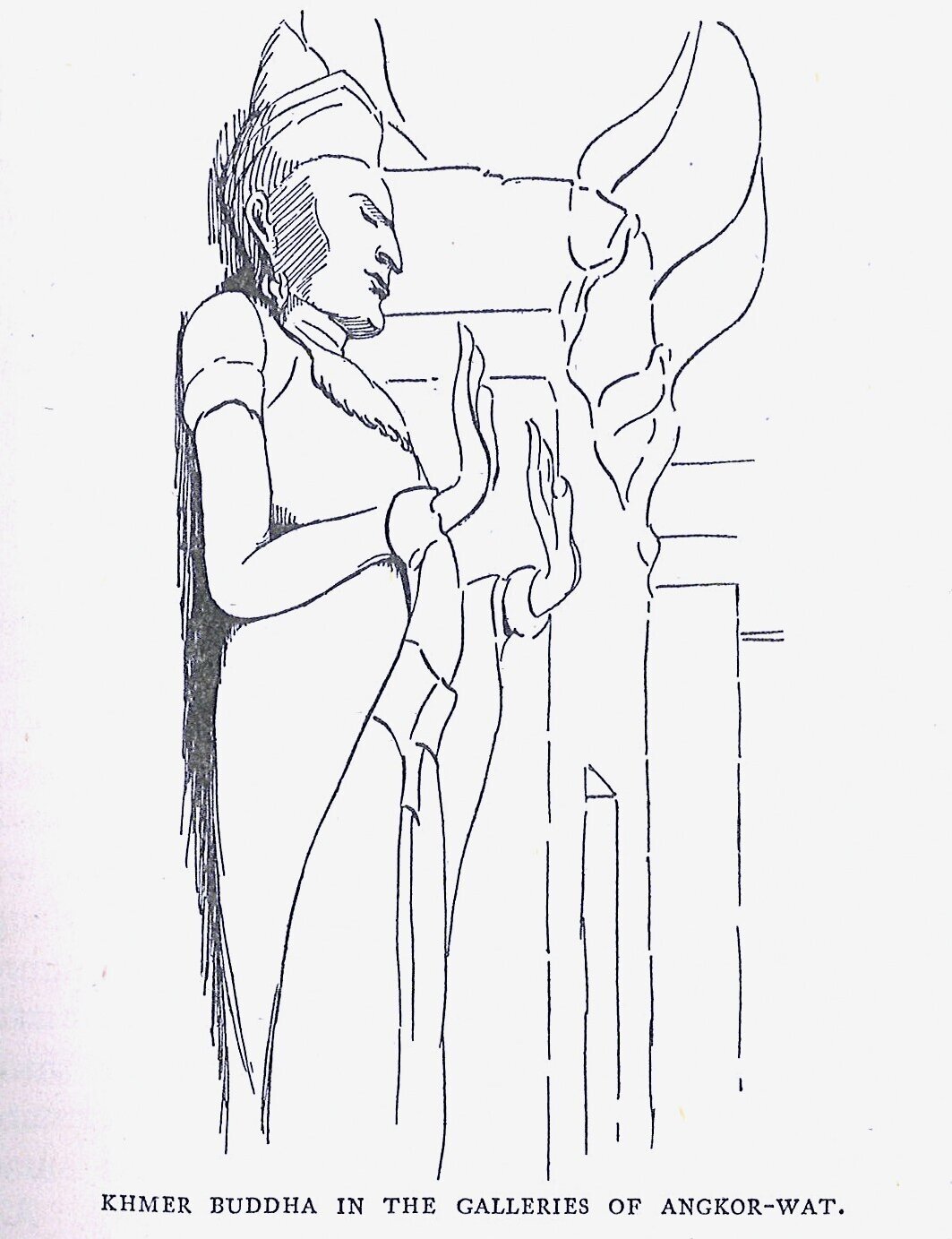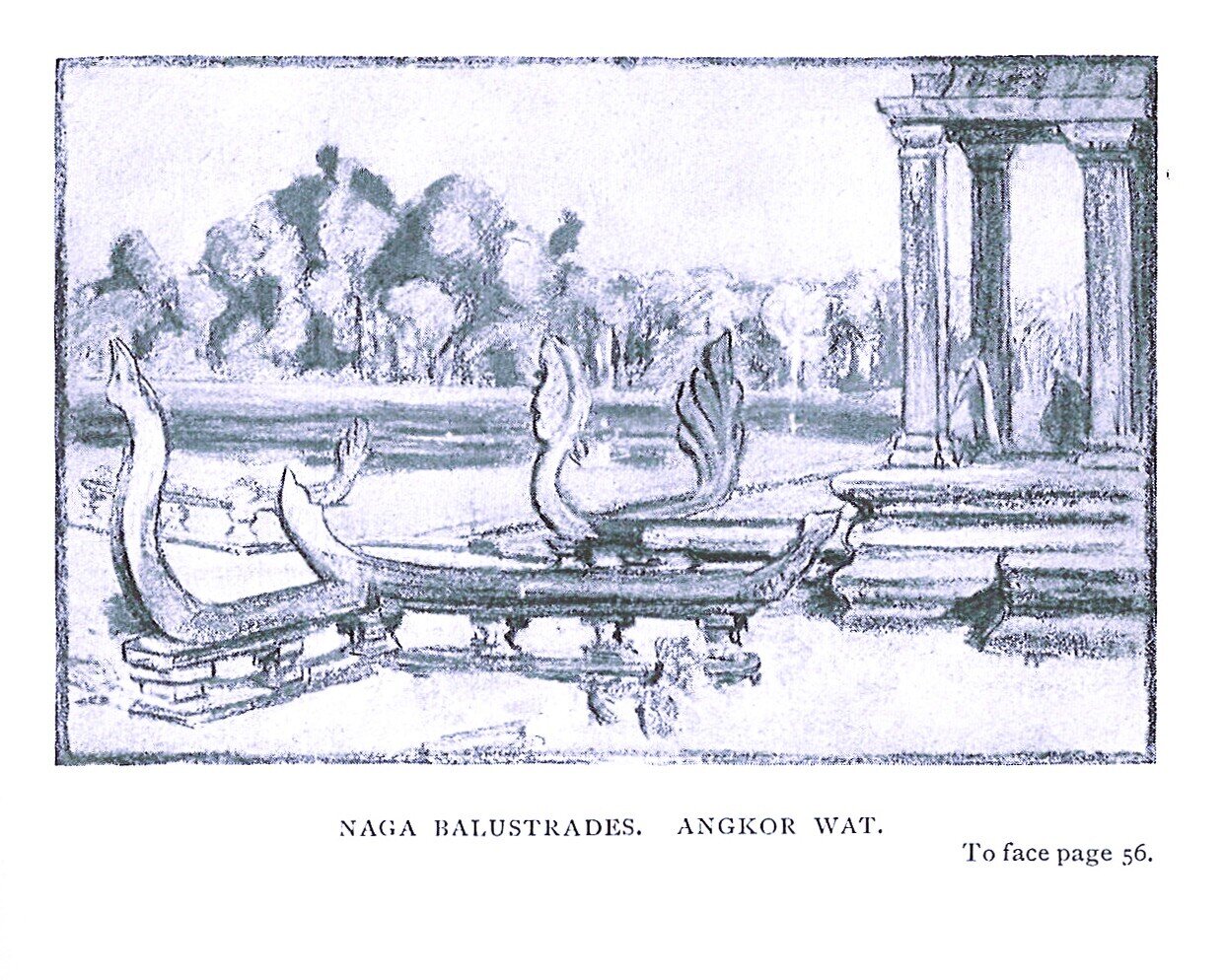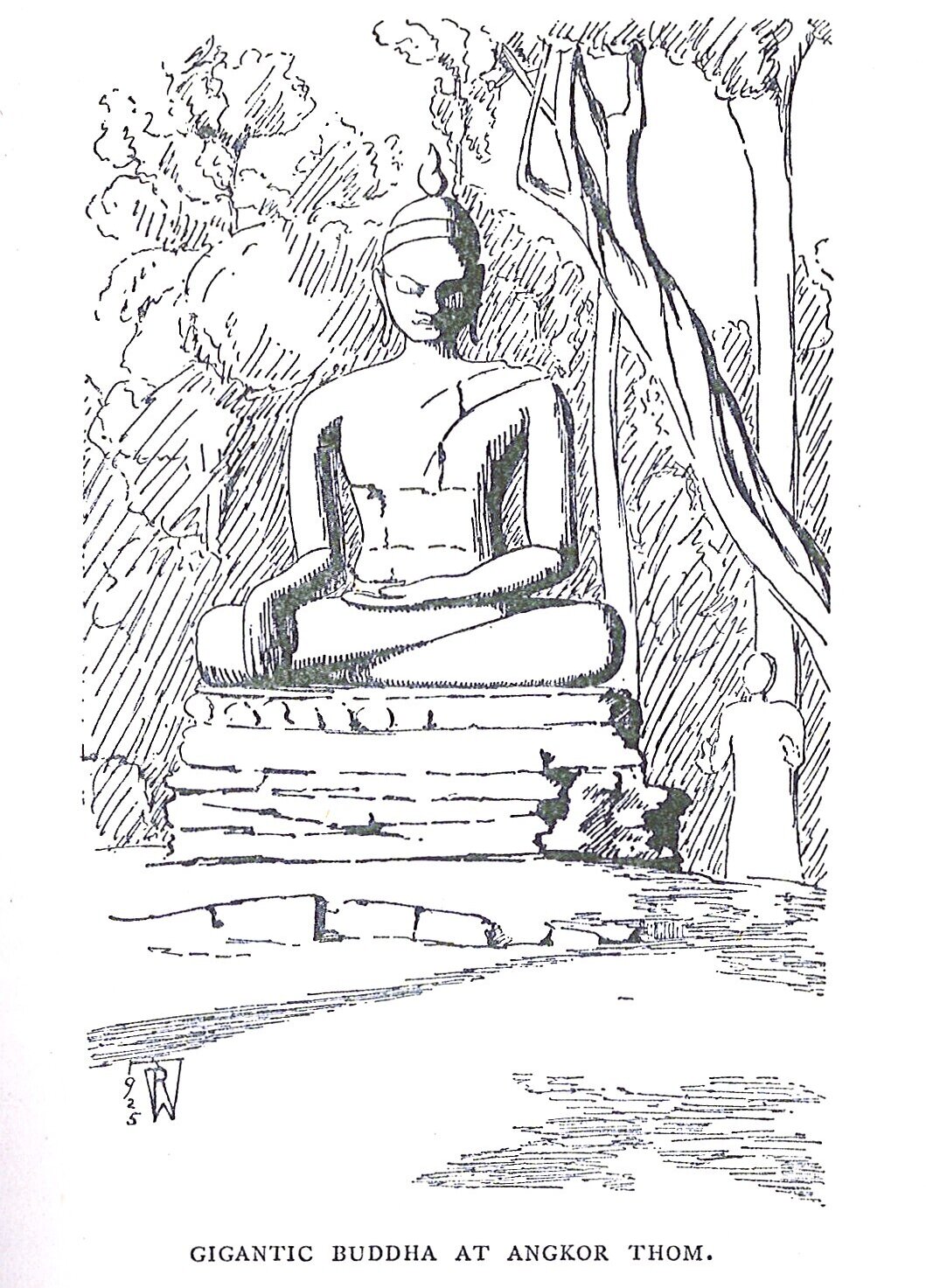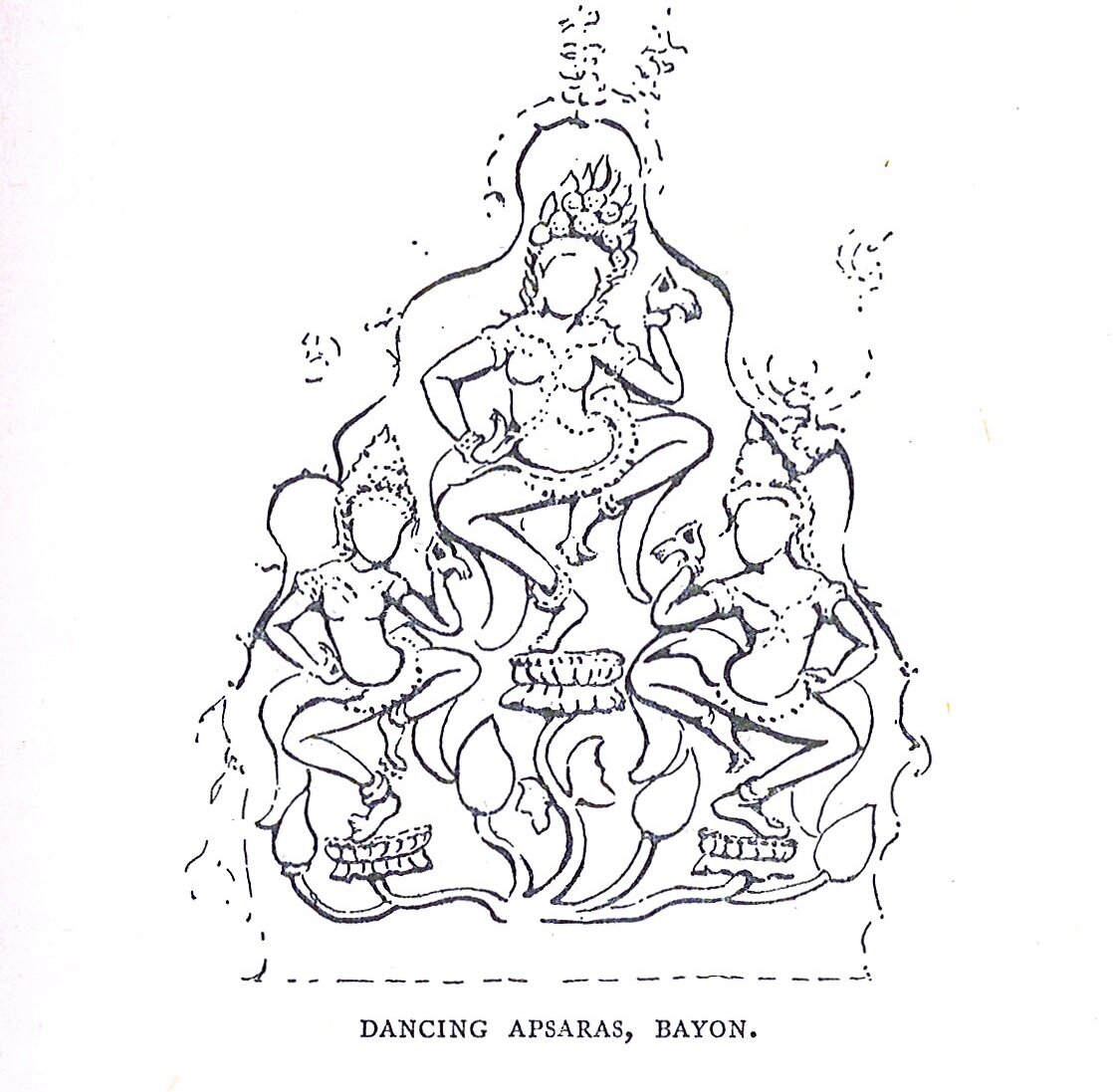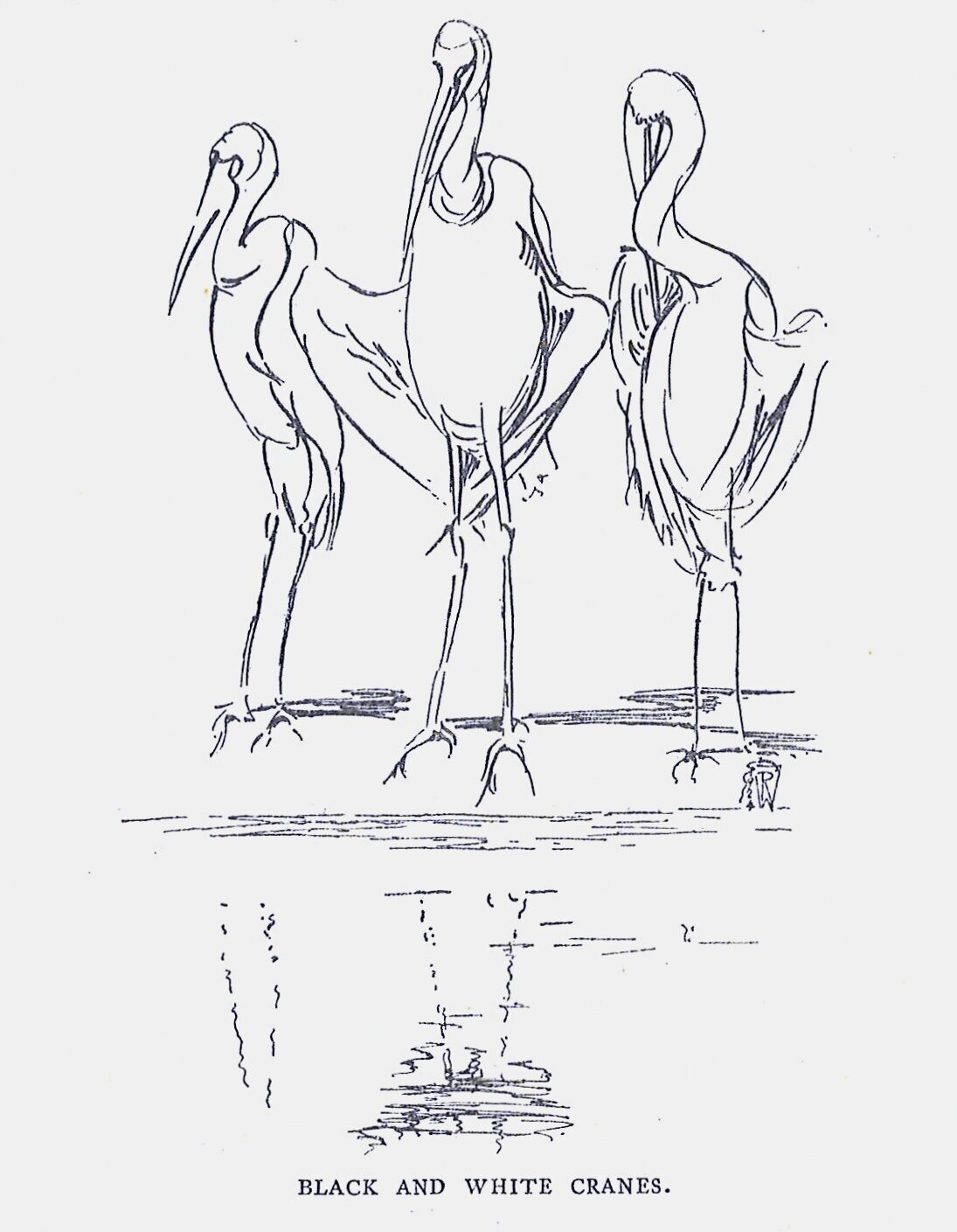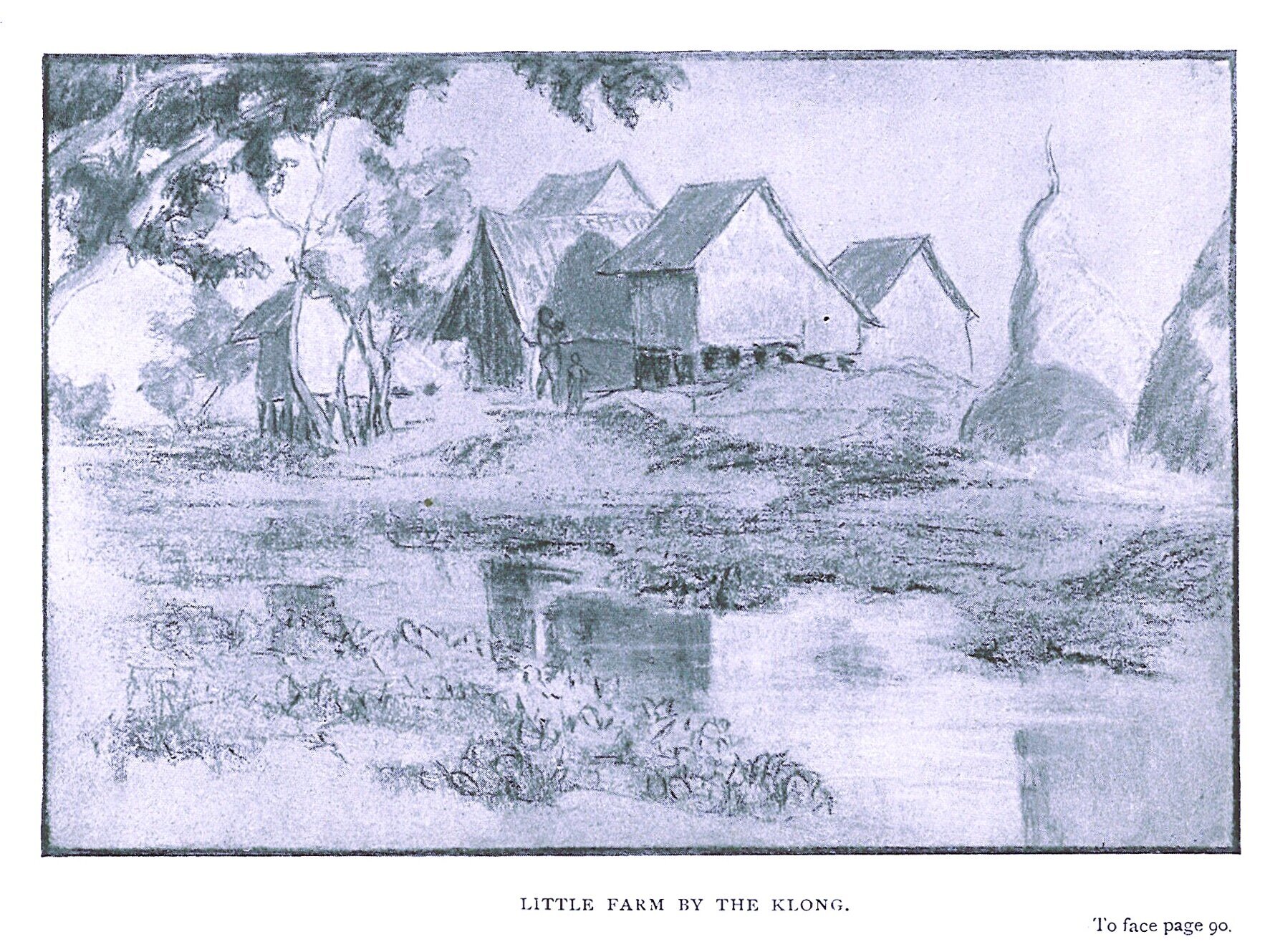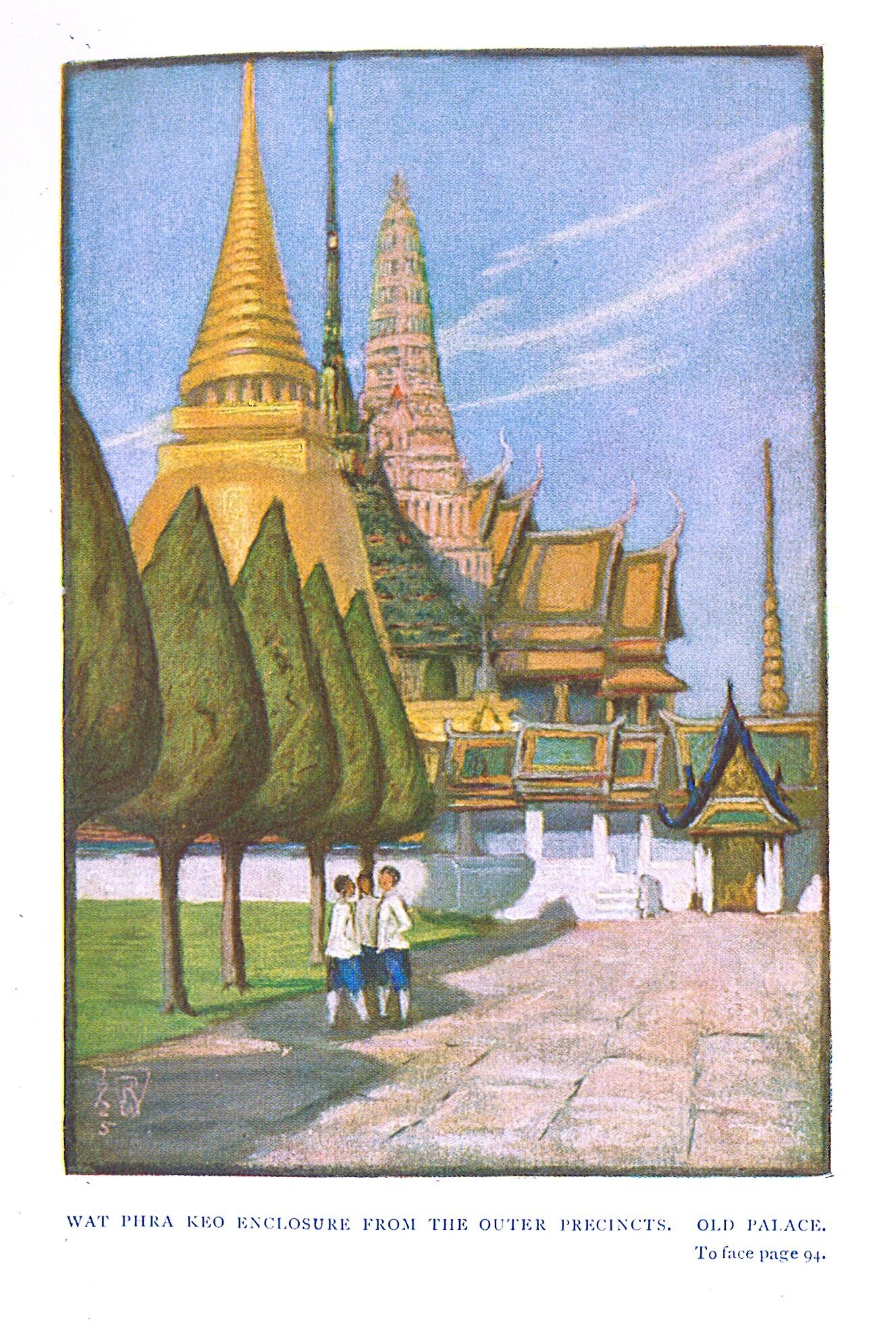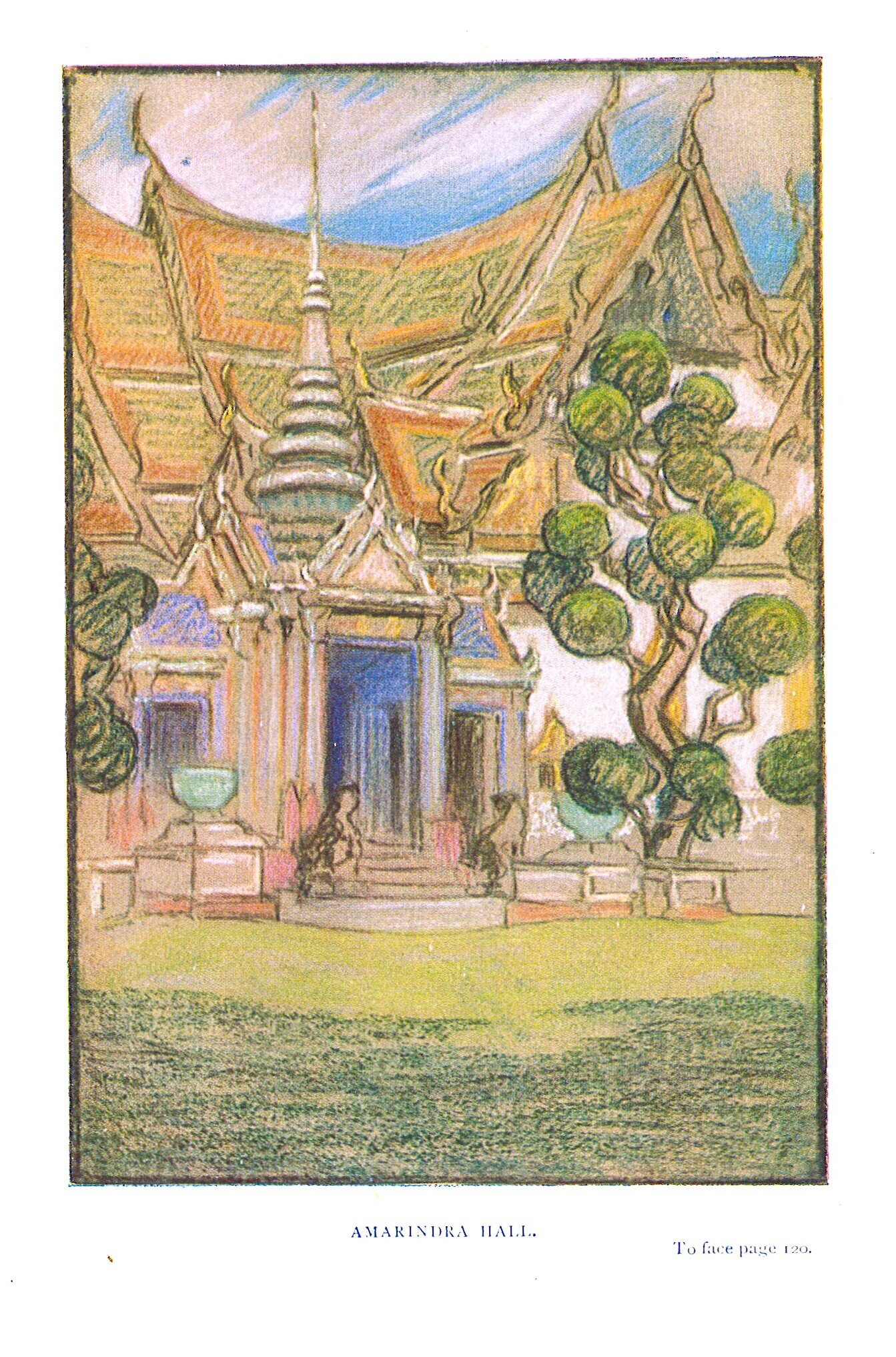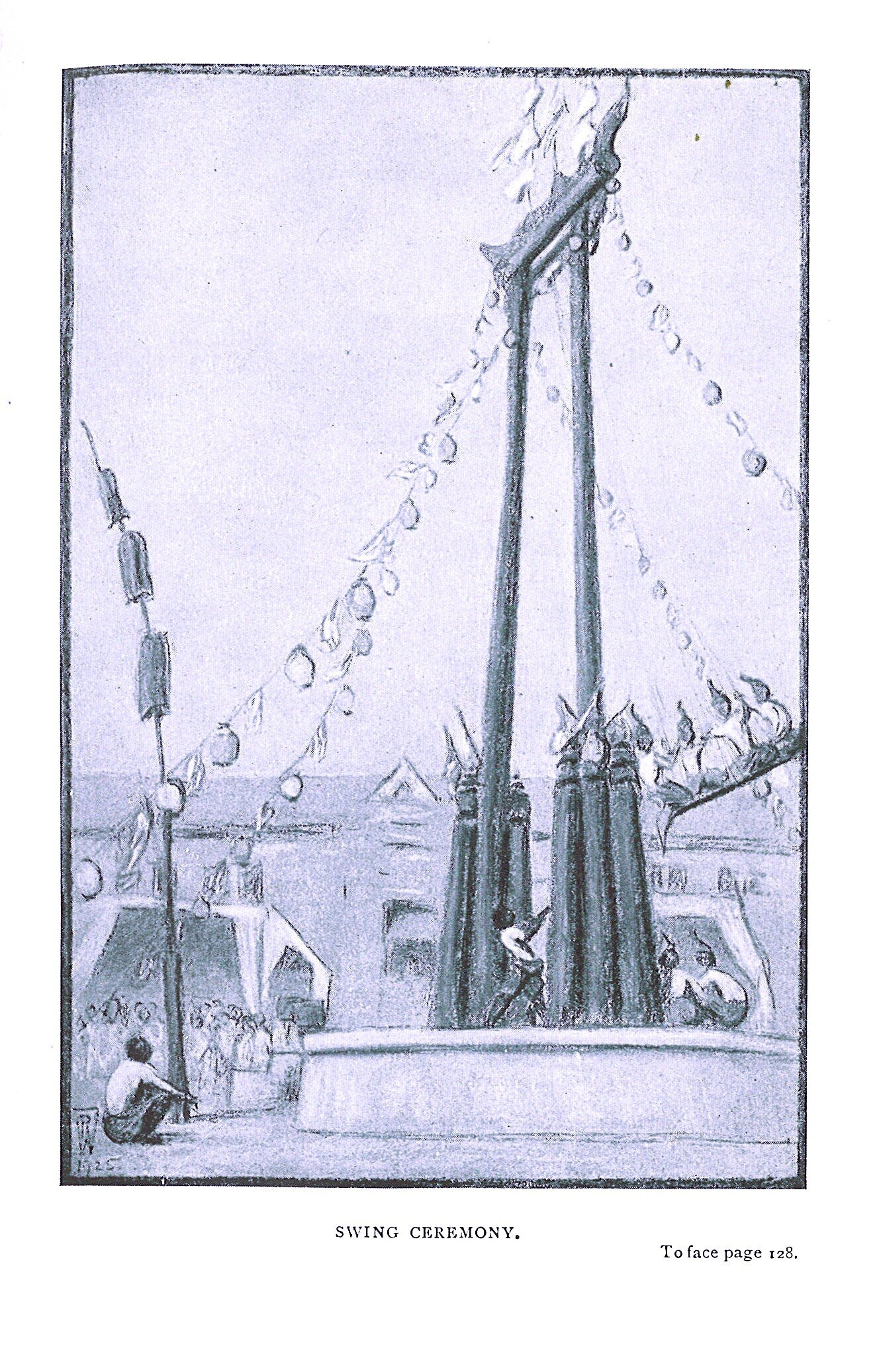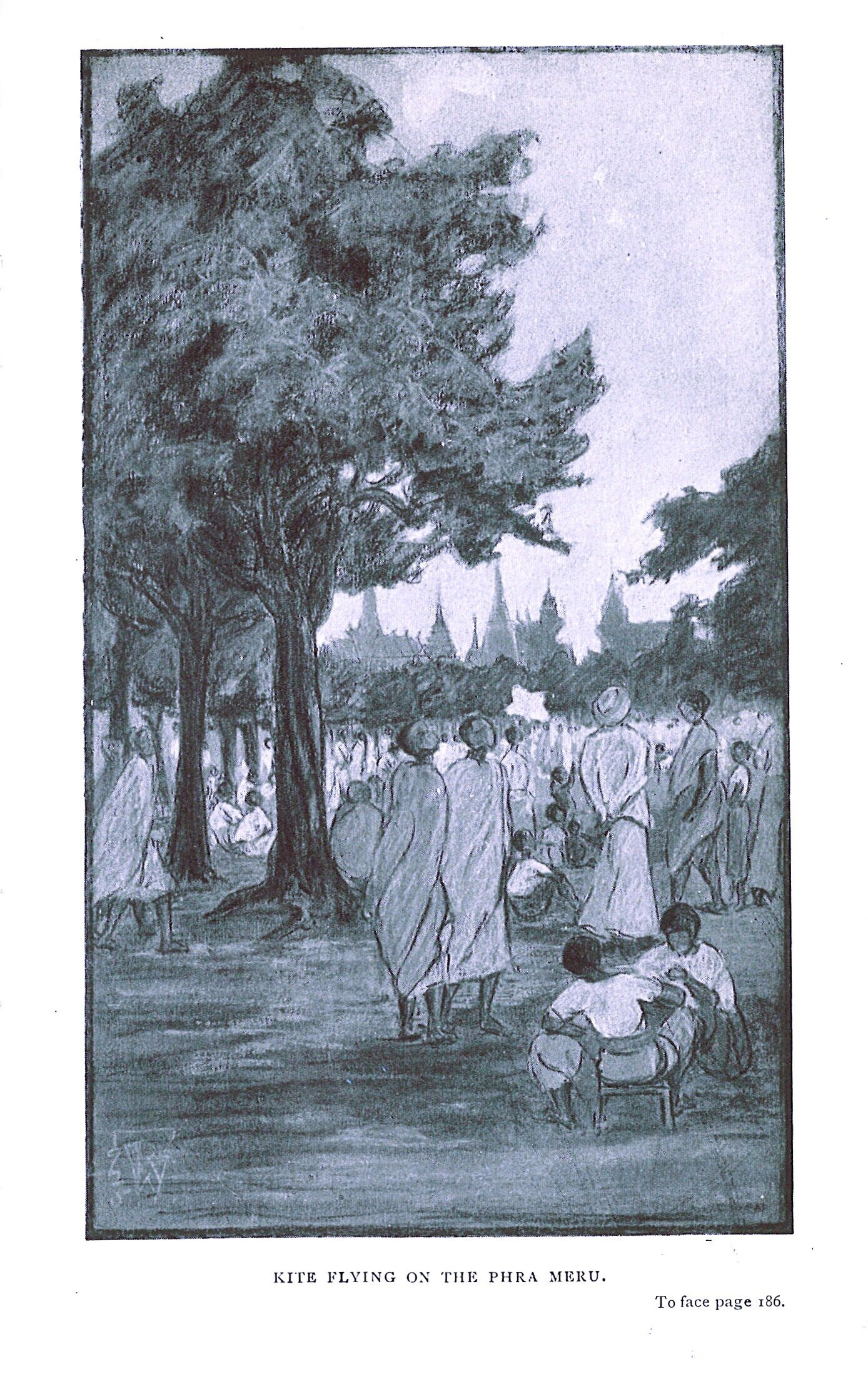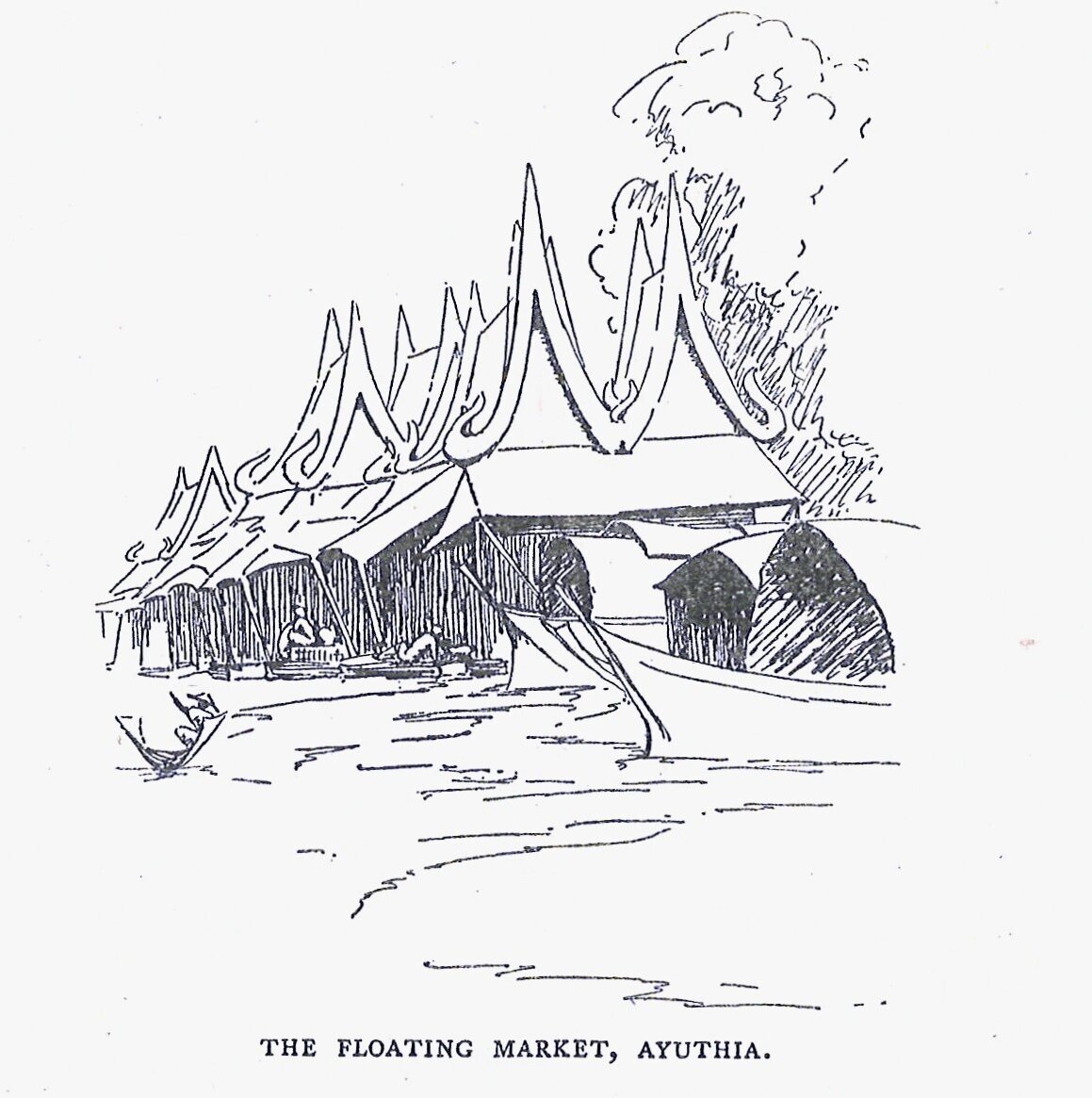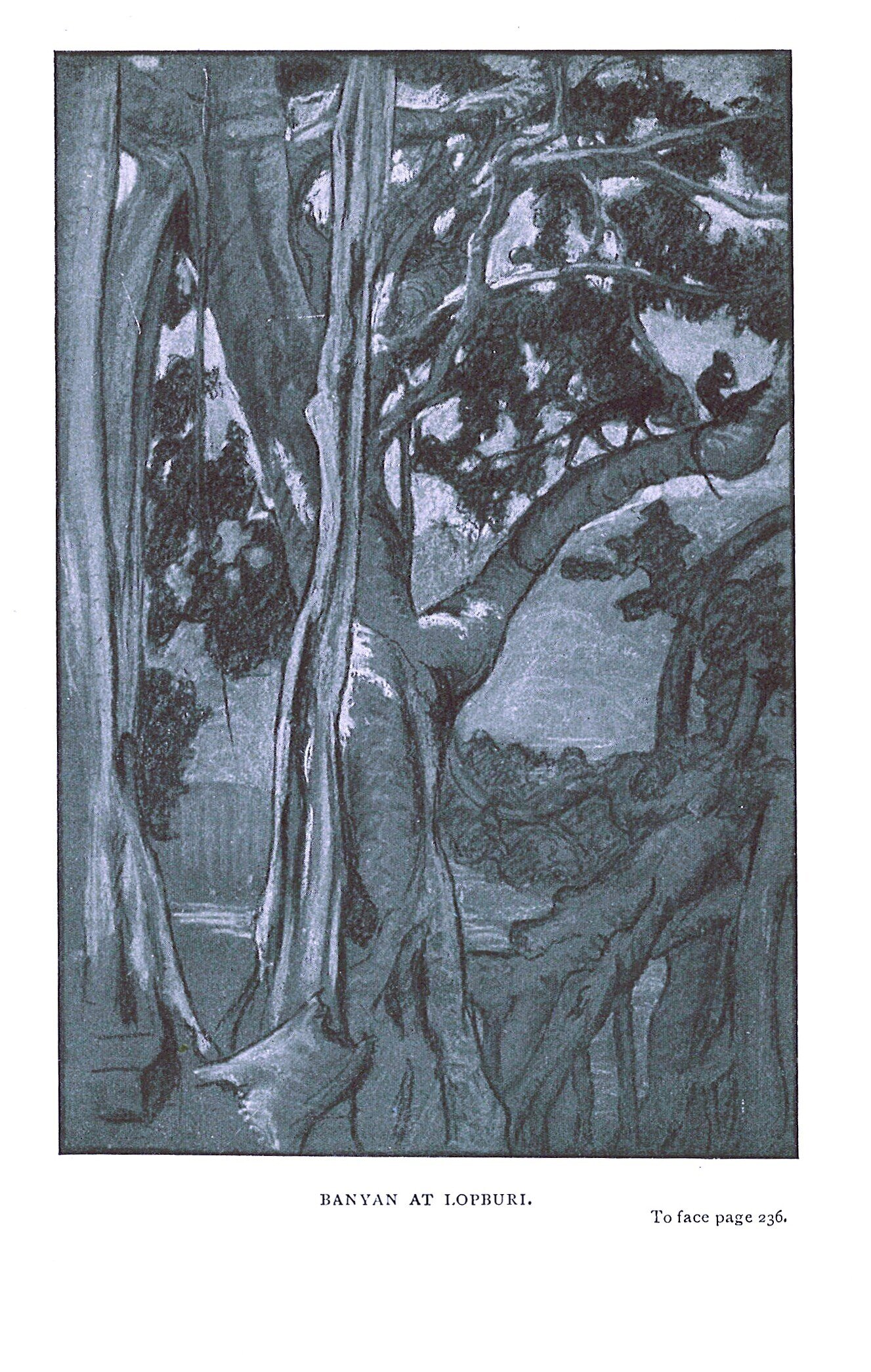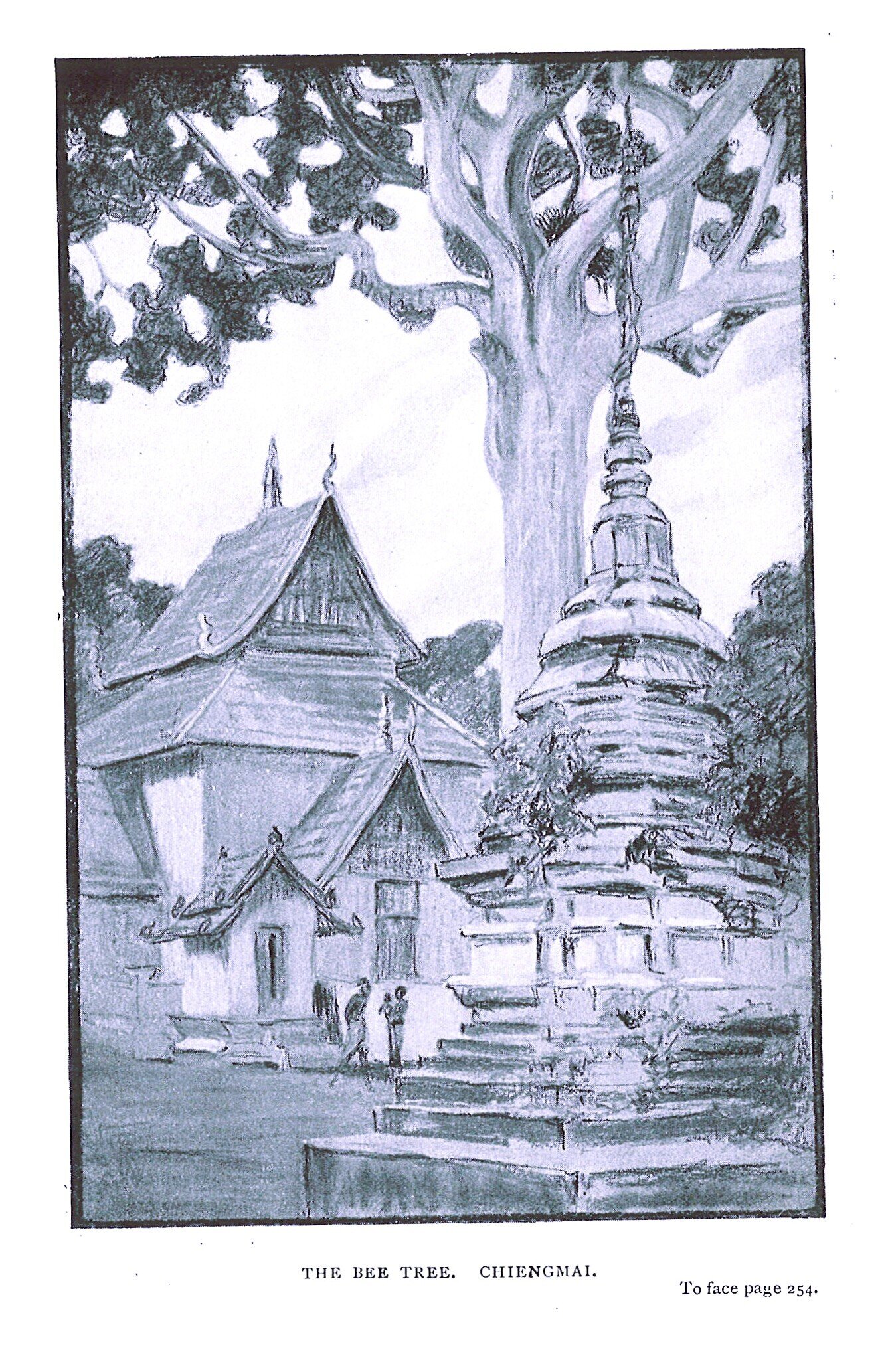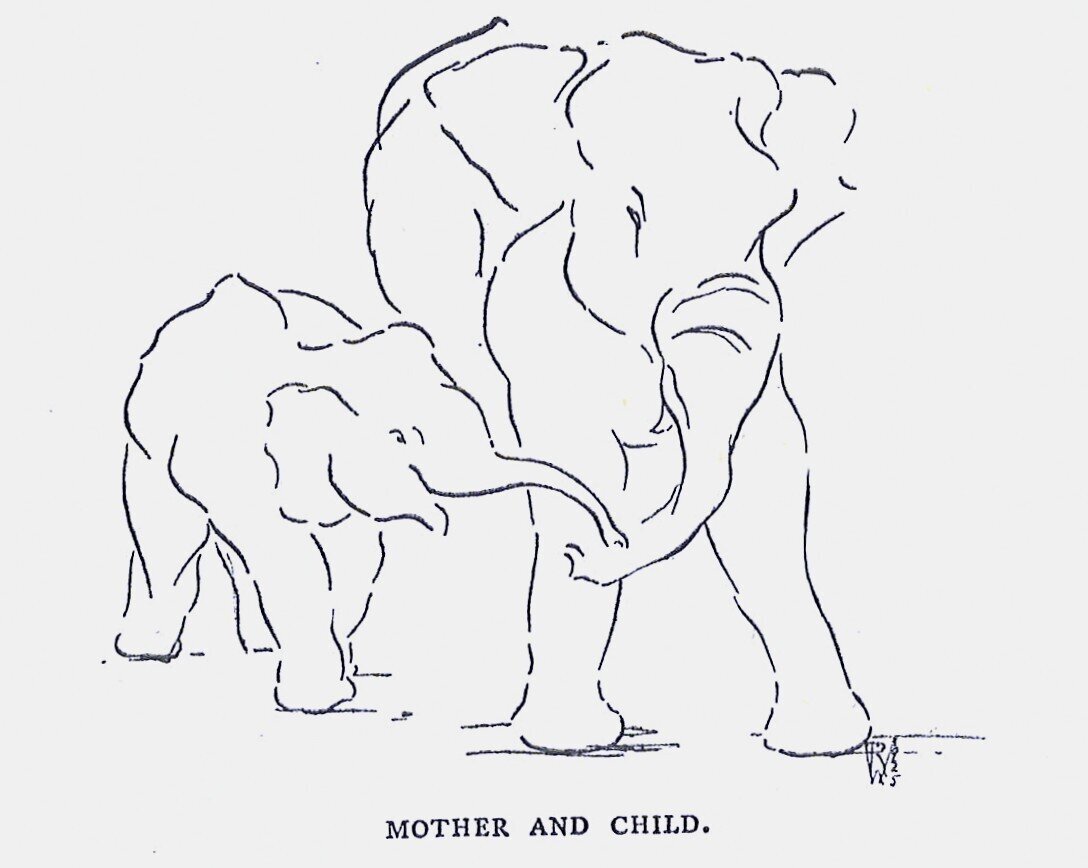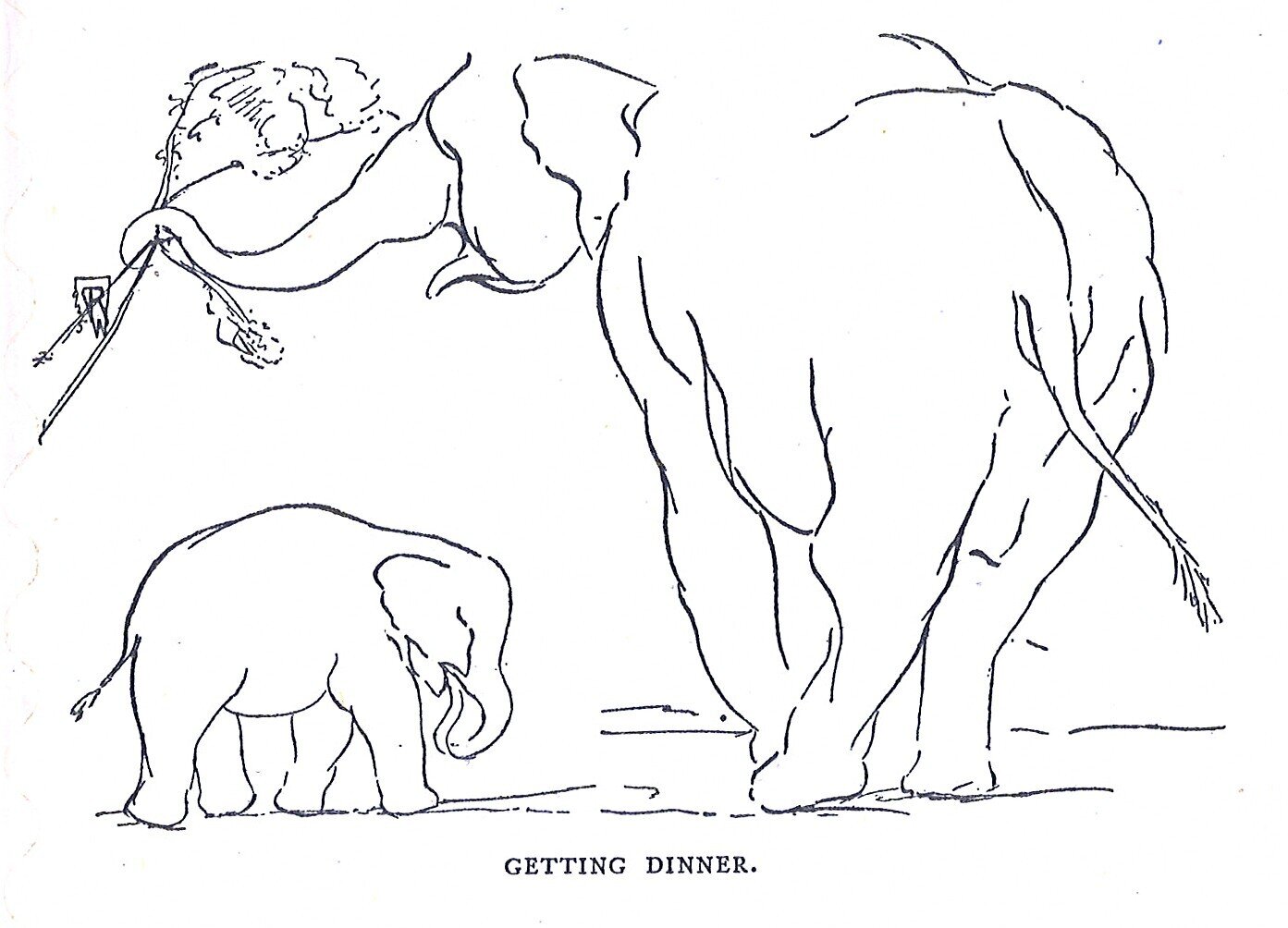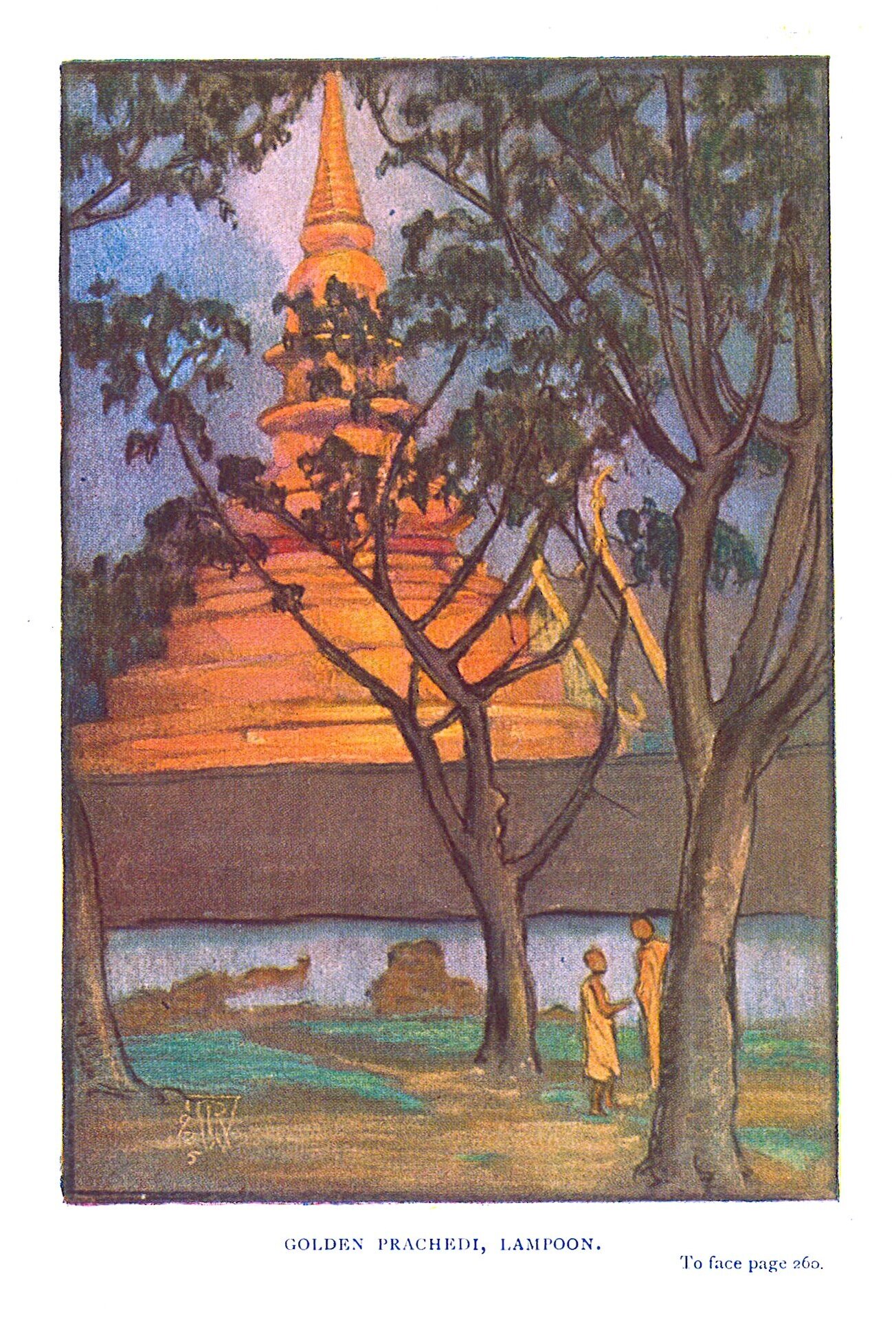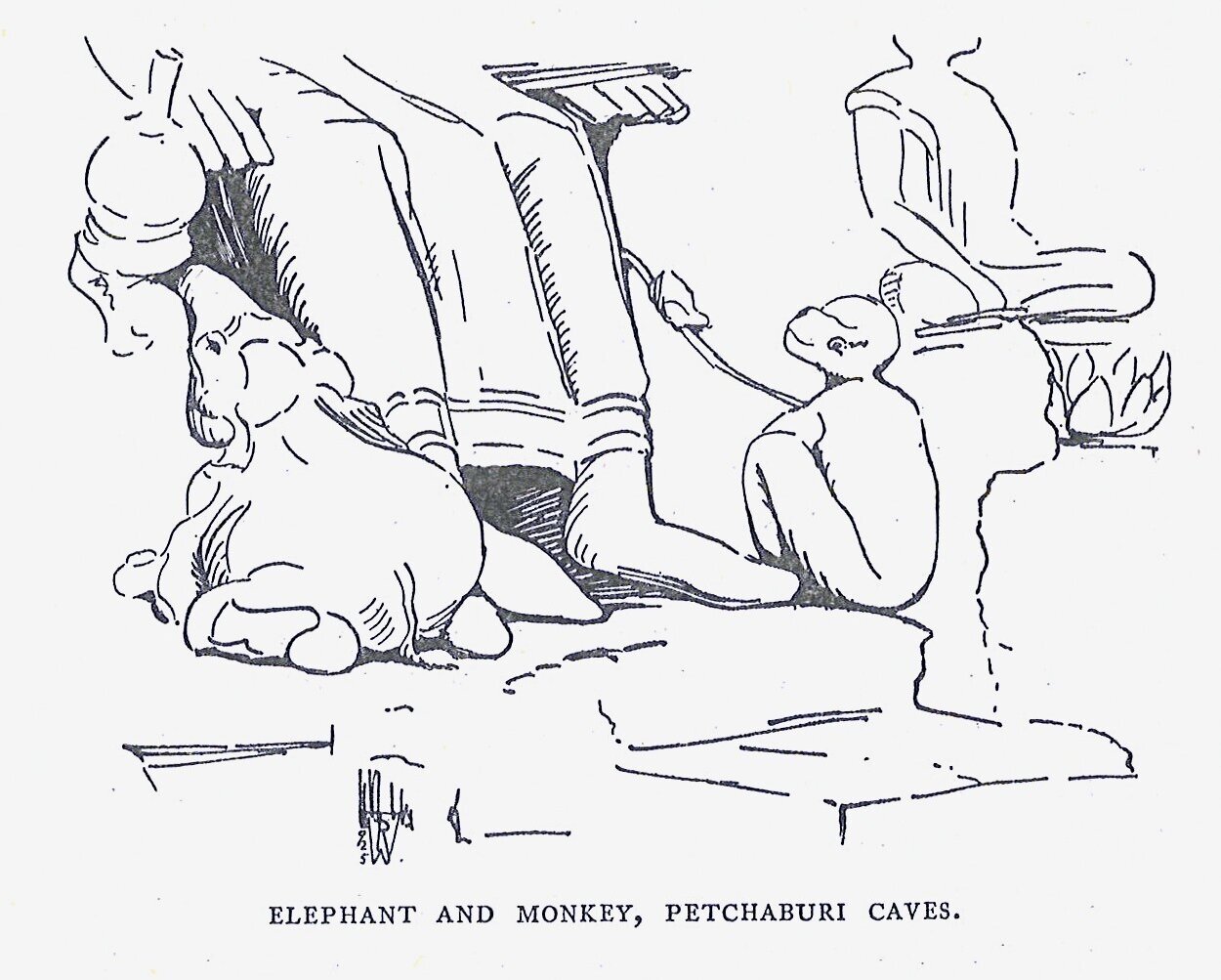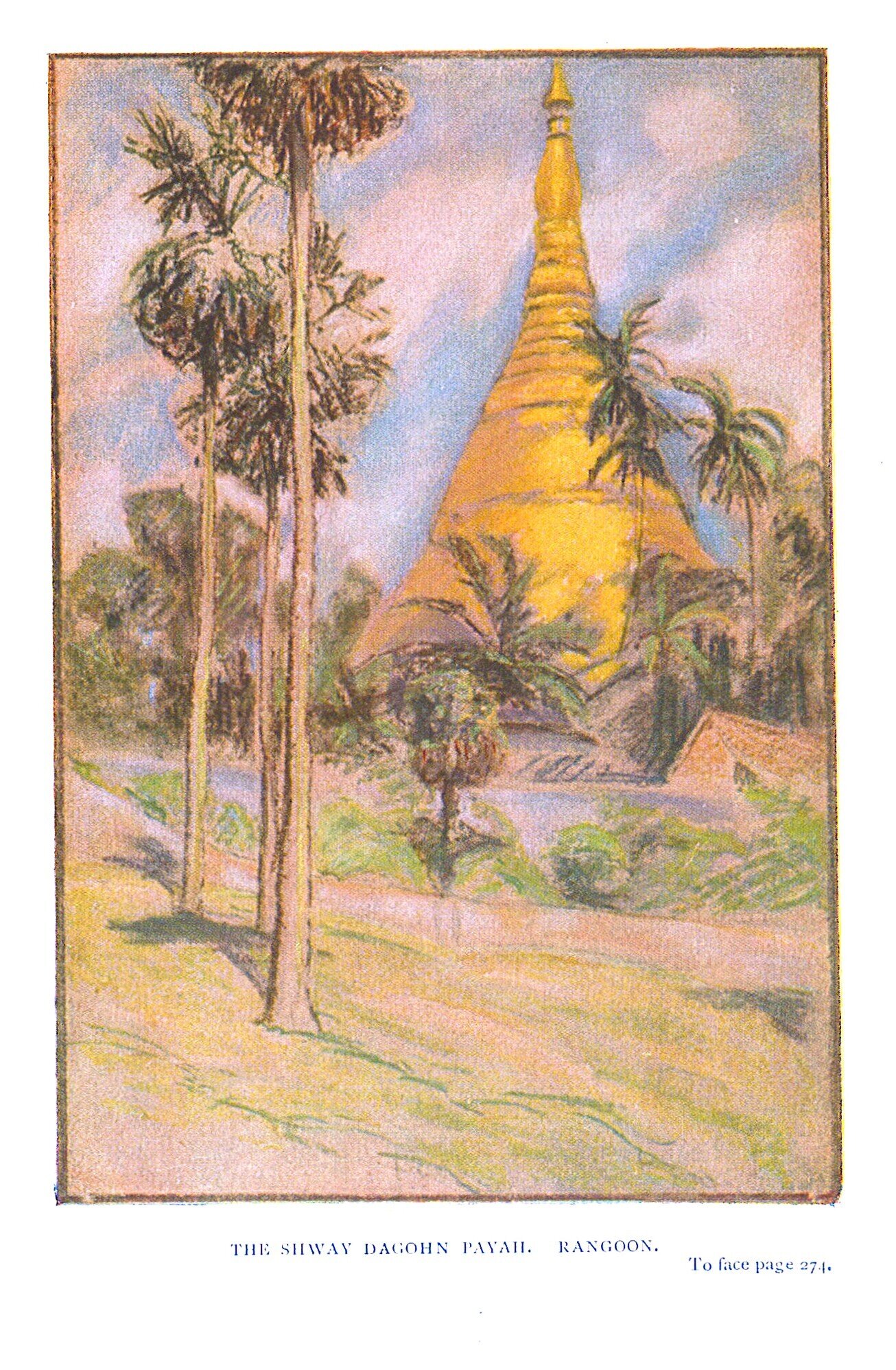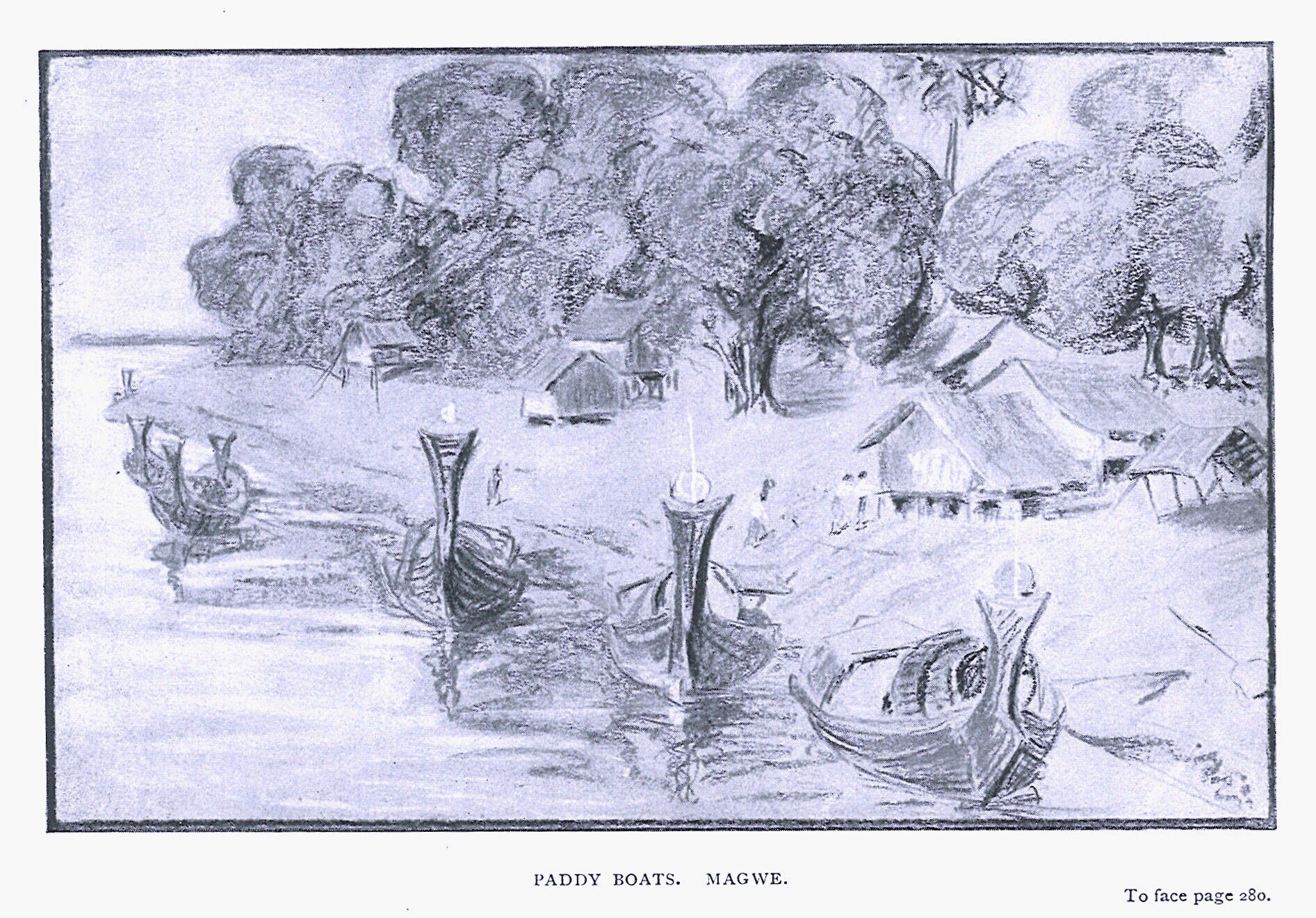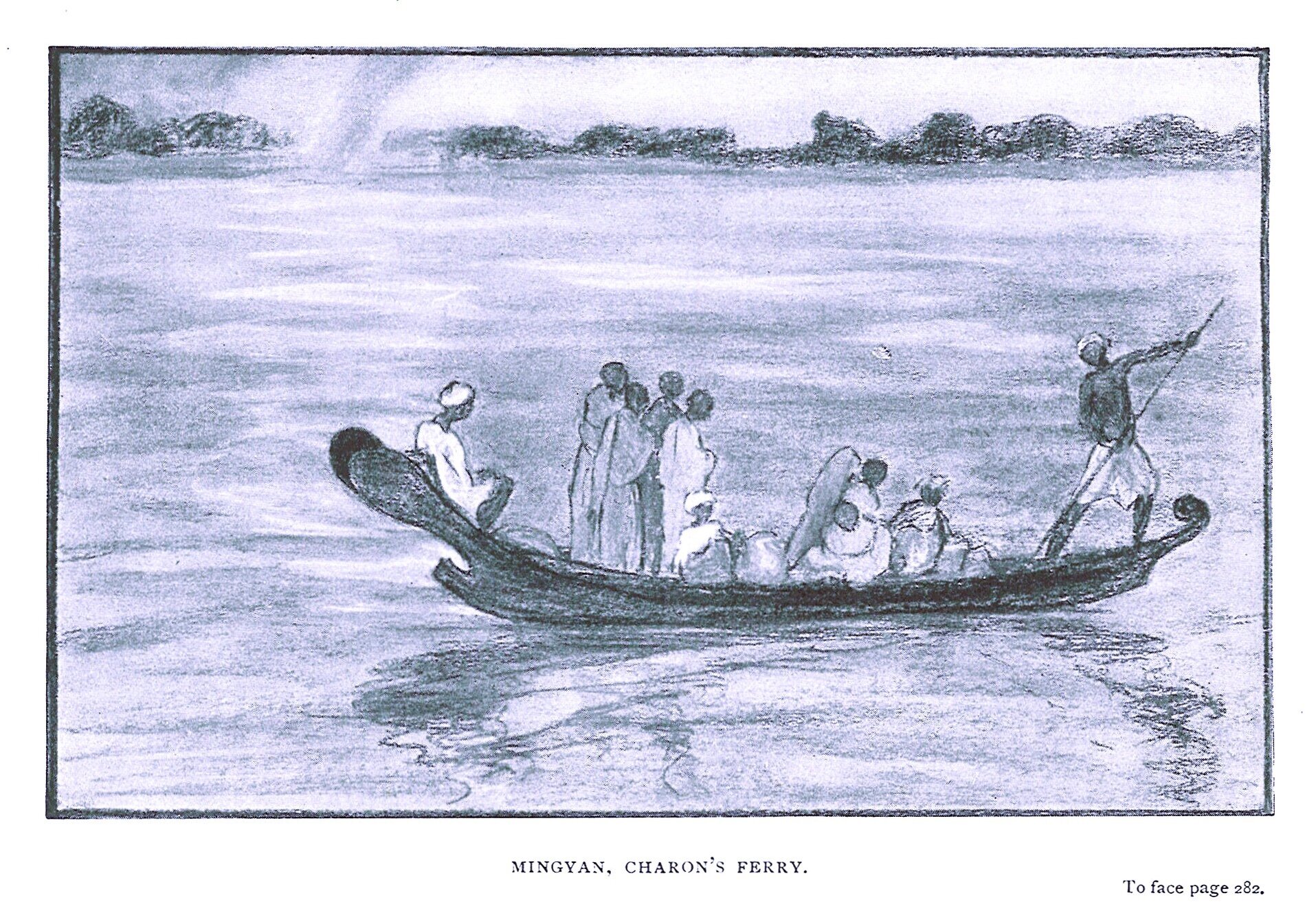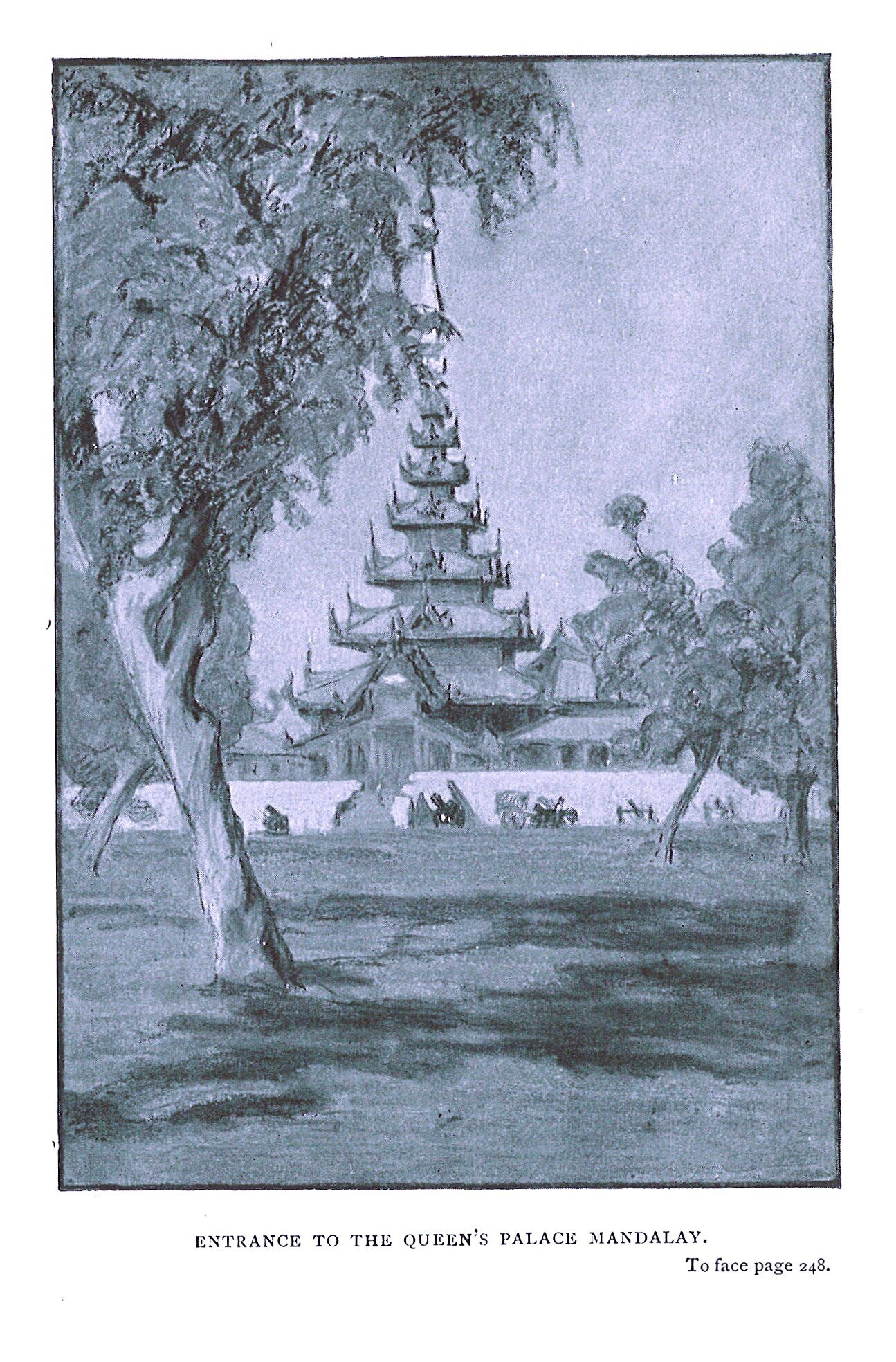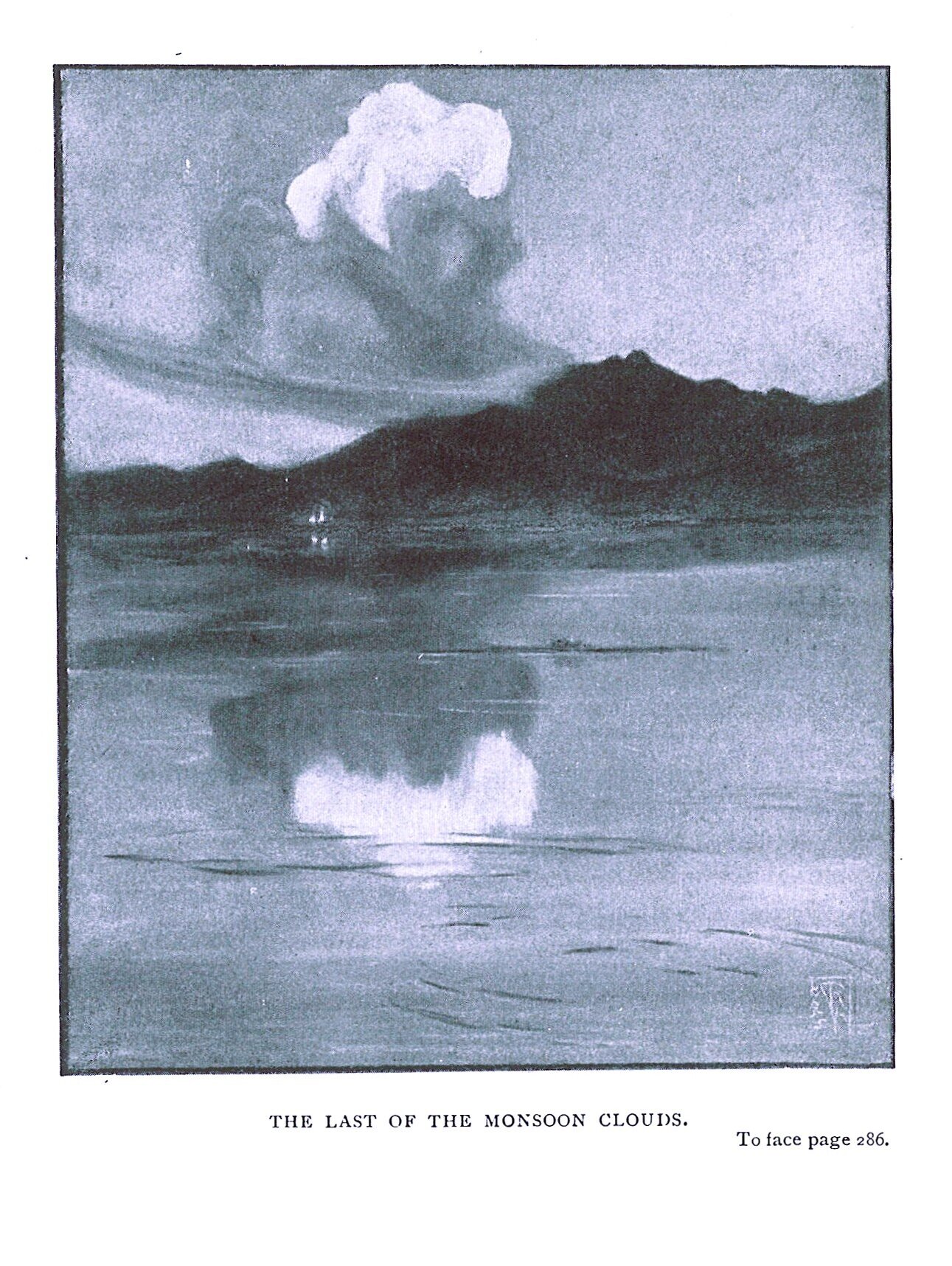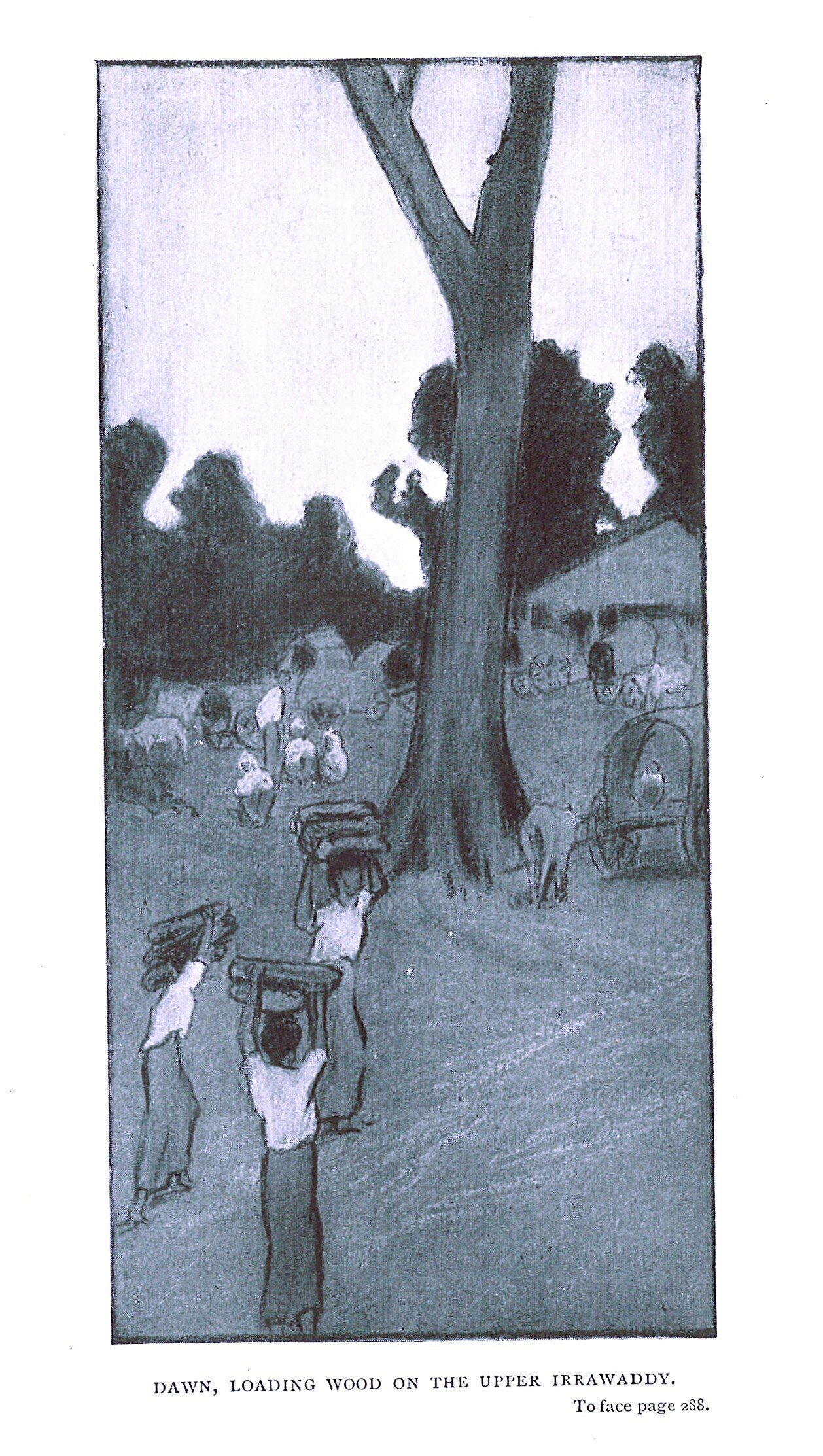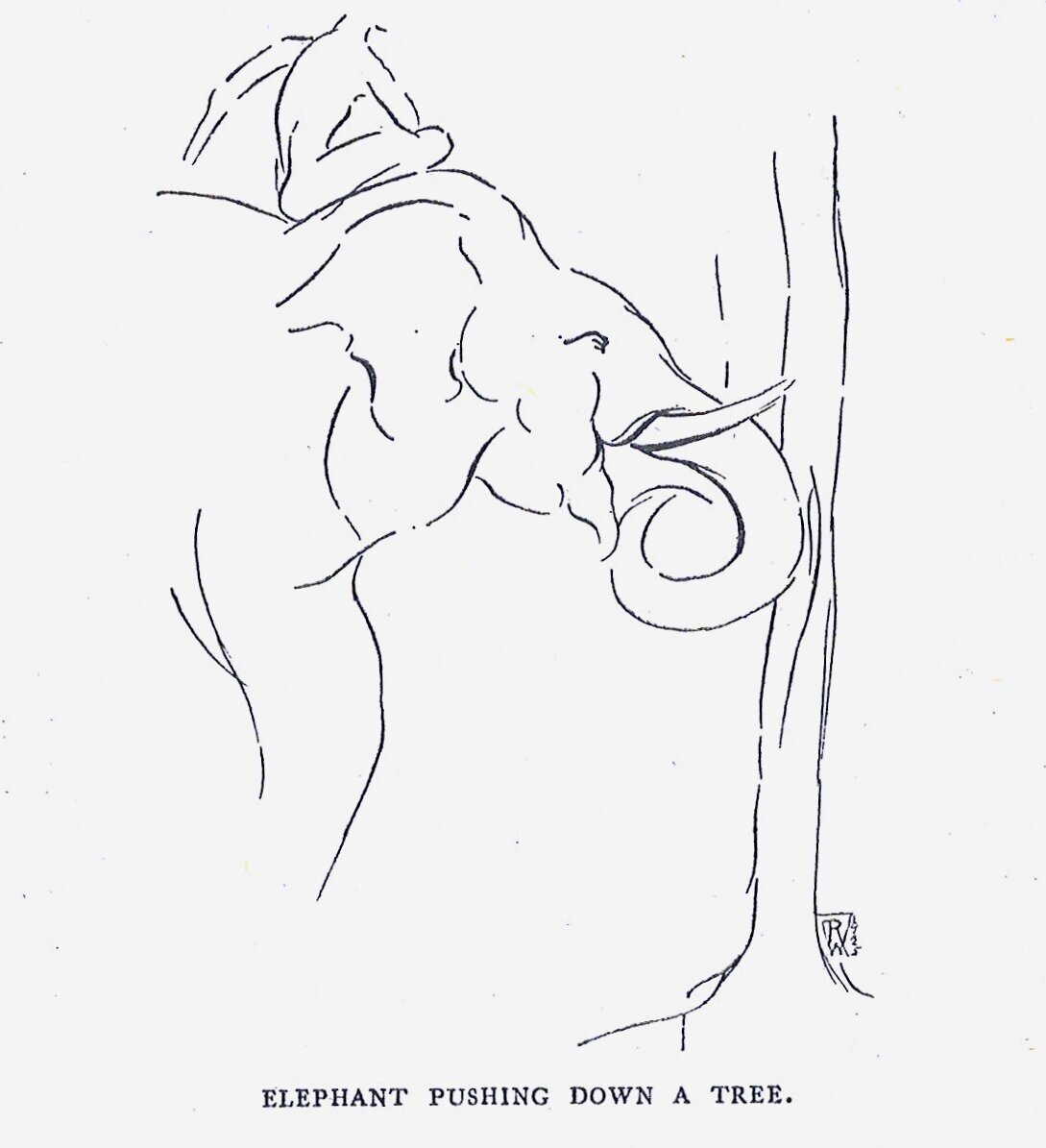Rachel Wheatcroft's Siam and Cambodia in Pen and Pastel, c. 1925
by Rachel Wheatcroft
45 pastel paintings and pen on paper drawings reflecting Cambodia, Siam, Burma and South China in the 1920s.
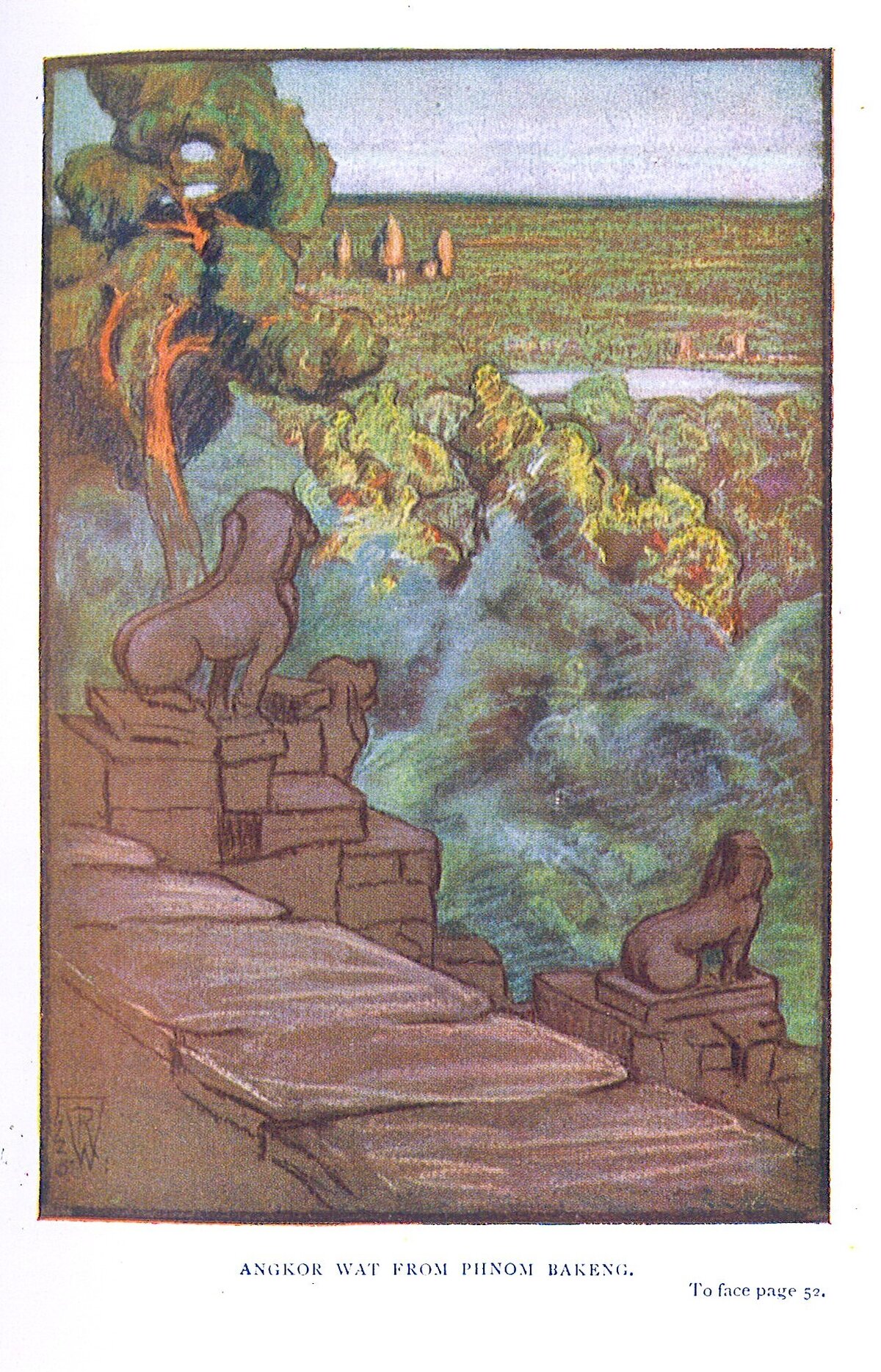
Published: 1928
Author: Rachel Wheatcroft
Source: Rachel Wheatcroft's paintings and drawings in her 1928 book.
Here below are the captions by the author, with additional information in square brackets when needed. In bold, illustrations related to Cambodia:
- Porcelain Prachedi at Wat Boh [Frontispiece]
- The Evening after the Decease [Chinese funeral procession, Beijing]
- Wedding Procession [Beijing]
- Kwanyin, Goddess of Mercy [Black Dragon Temple, Western Hills, Beijing]
- Mining Village, Western Hills [id.]
- The Pyramids at I’Chang [Yangtse River]
- Held up at Wanshien [Yangtse River]
- In the Yangtse Gorges
- Sugar Loaf Hills across the River. Chungking [Chongqing or Chungking 重庆, city iof Southwestern China]
- Angkor Wat from Phnom Bakeng
- Cambodian Monk
- Khmer Buddha in the Galleries of Angkor Wat
- Naga Balustrades. Angkor Wat
- A Cambodian Peasant
- Gigantic Buddha. Angkor Thom
- Brahman Heads at the Bayon
- Dancing Apsaras. Bayon
- Angkor Wat from the Bungalow at Dawn
- Siém Réap
- Black and White Cranes
- Little Farm by the Klong [Siam]
- Wat Phra Keo enclosure from the Outer Precincts. Old Palace
- Blue Roof of Wat Phra Keo, with Kinorn and Yak
- Amarindra Hall
- The King’s Birthday Illuminations
- Swing Ceremony
- Phra Norn
- Kite Flying on the Phra Meru
- The Floating Market, Ayuthia
- From the Floating House. Our Neighbours
- Banyan at Lopburi
- In Muang Ngao Forest. The Hobbled Elephant
- Elephant pushing down a Tree
- Phya Nak, Wat Luang
- The Bee Tree, Chiengmai
- Mother and Child
- Getting Dinner
- Golden Prachedi, Lampoon
- Elephant and Monkey, Petchaburi Caves
- The Shway Dagohn Payah
- Rangoon
- Paddy Boats, Magwe
- Mingyan, Charon’s Ferry
- Entrance to the Queen’s Palace, Mandalay
- The last of the Monsoon Clouds
- Dawn. Loading wood on the Upper Irrawaddy
Tags: English artists, 1920s, Siem Reap, Khmer arts, Bungalow d'Angkor, Siam, Beijing, Burma, Bakheng
About the Photographer
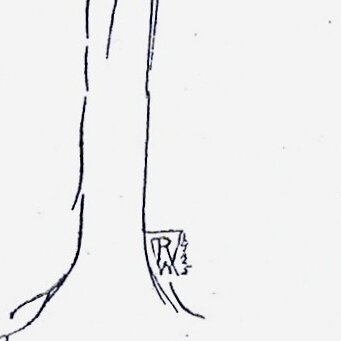
Rachel Wheatcroft
Rachel Wheatcroft (10 Sept. 1868, Biéville [Beuville], Normandy, France — 25 March 1942, Coneys, Guildford, Surrey, UK) was a British visual artist who went to Siam and Cambodia around 1925, a journey that inspired her a book she illustrated with drawings and paintings in pastel colors.
Daughter of Protestant minister Francis George Wheatcroft and Katherine Wheatcroft born Vulliamy — her maternal grandfather, Julien Theodore Vulliamy, was the scion of an old Huguenot family, a wealthy wool merchant with businesses in France and England -, she led quite a a secluded life in the countryside of Sussex as an unmarried painter and decorative designer. We only know that she exhibited at least twice in London: once at the New Dudley Gallery in 1909, alongside famous English painter Simon Bussy; and another time (no exact date) at the Modern Gallery, with fellow “artist-traveller” Joan Mary West (24 June 1883, Bournemouth, Hampshire — 1974, Stroud, Gloucestershire).
We also know she spent most of her youth at her eldest maternal aunt’s residence, Elisabeth (1833−1908), and she was close to her mother’s younger sister, Marie Vulliamy (10 Feb. 1840, Beuville, France — 7 Jan. 1885, Dorking, England). The vivacious Anglo-French beauty had caused a stir by marrying on 20 Sept. 1864 famous poet and novelist George Meredith (12 February 1828 – 18 May 1909), who was not only twelve years older than she but had a 11-year-old son from a previous marriage that had ended in an infamous divorce. Julien Vulliamy, the father’s maiden, had consented after expressing serious doubts [1].
Marie Meredith-Vulliamy, Rachel Wheatcroft’s aunt, portrait in colored chalks by Frederick Sandys, around the time of her marriage with George Meredith.
In Beauchamps’s Career (1876), George Meredith wrote of Renée, a female character obviously inspired by Marie Vulliamy who “was like a delicate cup of crystal brimming with the beauty of the place.… Her features had the soft irregularities which run to rarities of beauty, as the ripple rocks the light; mouth, eyes, brows, nostrils, and bloomy cheeks played into one another liquidly; thought flew, tongue followed, and the flash of meaning quivered over them like night-lightning. Or oftener, to speak truth, tongue flew, thought followed: her age was but newly seventeen, and she was French.”
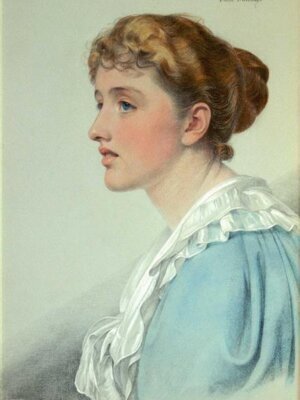
The happily unconventional couple soon had two children, and life with Marie comforted the enfant terrible of the Victorian literature in his conviction that the degrading status of women had to change: “the Amazing Victorian” — to use a moniker coined by Mervyn Jones — published his Ballad of Fair Ladies in Revolt (Fortnightly Review, 1 Aug 1876), followed by the proto-feminist novel that brought him literary consecration, Diana of the Crossways, issued in 1885, the same year that Marie was carried of by an aggressive throat cancer. When Meredith passed away on 14 May 1909, Common Cause, the official magazine of the National Union of Women’s Suffrage Societies, NUWSS, paid him a tribute on its front page for “helping on women to freer expression.”
We may assume that Rachel Wheatcroft shared this committment to women’s emancipation [2] — combined with a profound Christian faith — when she embarked on a long journey eastwards. Even if she gave very few details in her travel book Siam and Cambodia in Pen and Pencil, we were able to glean some useful notations. At the start, she spend two years or more — from 1922 — in Ceylon [Sri Lanka], teaching painting and drawing at the YWCA. The Young Women’s Christian Association (YWCA), a movement working for the empowerment, leadership and rights of women, young women and girls, had been founded by Mary Jane Kinnaird and Emma Robarts in 1855 in the United Kingdom, and the Ceylonese branch in 1882, upon the visit of Emily Kinnaird.
In 1924, she was in Hong Kong, desirous to stay at the Helena May Institute (now Social Club on Garden Road) but was sent instead to a boarding-house reeking of “the smell of mutton exactly like in a “seaside resort” in England!” Traveling on a budget, she continued on Peking [Beijing], Canton [Guangzhou 广州市] and then Bangkok, mostly staying with Protestant missionary families. She gave some private classes in Peking, where she learnt from Chinese teachers that her last name, Wheatcroft, could be translated in Chinese as “cornfield, with a combination of the Chinese characters Tien Shin Gun, heart-field-plough.”
“Elephant pushing down a tree”, somewhere near Chongkan, one of Rachel Wheatcroft’s drawings bearing her initials and the year 1925.
The frugal, inconspicuous traveler then continued on to Angkor, which seems to have been the main cultural destination in her travel plans. We have noticed that Rachel Wheatcroft’s drawings of Siam and Cambodia bore her initials with the year “1925”. Here again, we don’t know what exactly triggered her interest. Had she come across Angkor The Magnificent, the sensational account published in 1924 by American suffragist Helen Churchill Candee? Or maybe she had previous exposure to Khmer history, as her aunts had friends working at the British Museum? Any further information is most welcome.
[1] C. L. Cline, “The Betrothal of George Meredith to Marie Vulliamy, Nineteenth-Century Fiction, Vol. 16, No. 3 (Dec. 1961), pp. 231 – 243, S.M. Ellis, George Meredith, His Life and Friends in Relation to his Work, London, Grant Richards, 1919, and Hannah Lynch, George Meredith, Nabu Press, 2010 (cf. pp. 60 – 61).
[2] We found at least one instance of ALS (“autographed, signed letter”) sent by Meredith to Rachel on 13 April 1907 in the George Meredith Collection, Harry Ransom Center, University of Texas, USA (Container 3.9 ). Apart from the two volumes containing some of his letters published by his eldest son Arthur (London, Constable & Co., 1912), there are numerous documents still to be perused at the Harry Ransom Center, in the collection kept at Yale University, at the London Royal Academy of Arts, etc.



